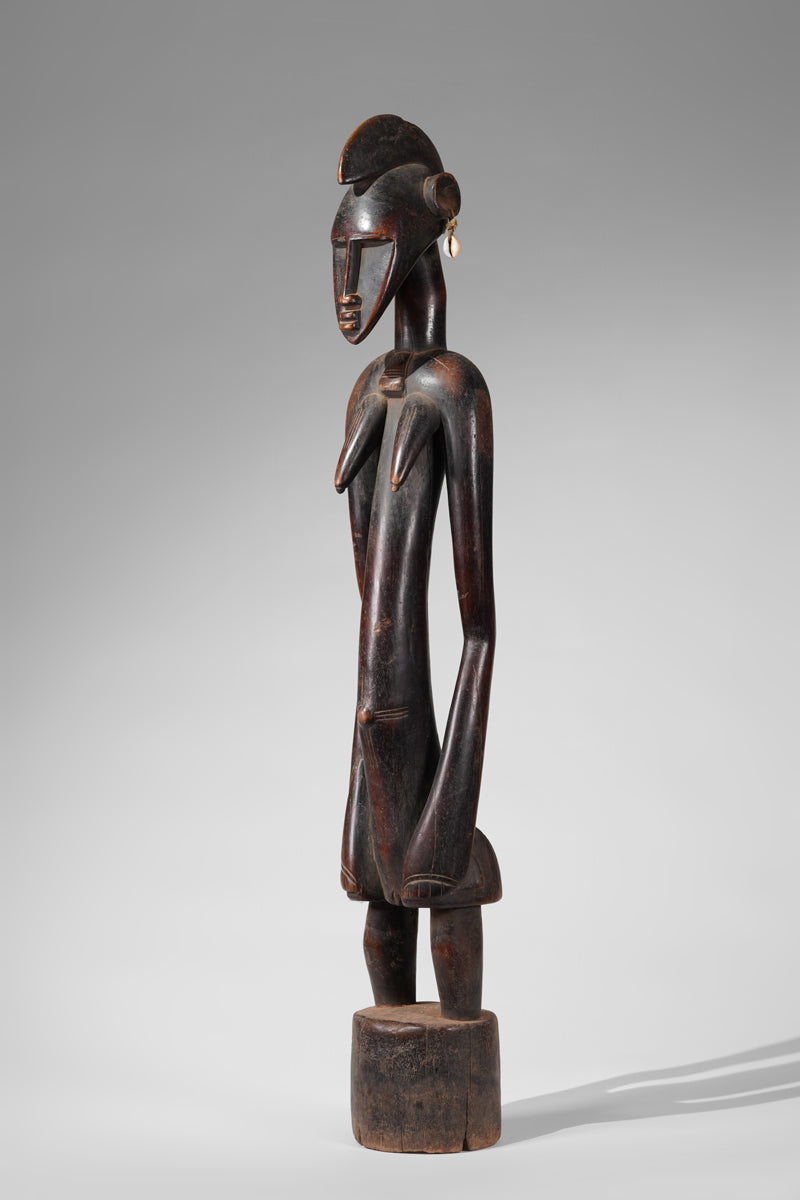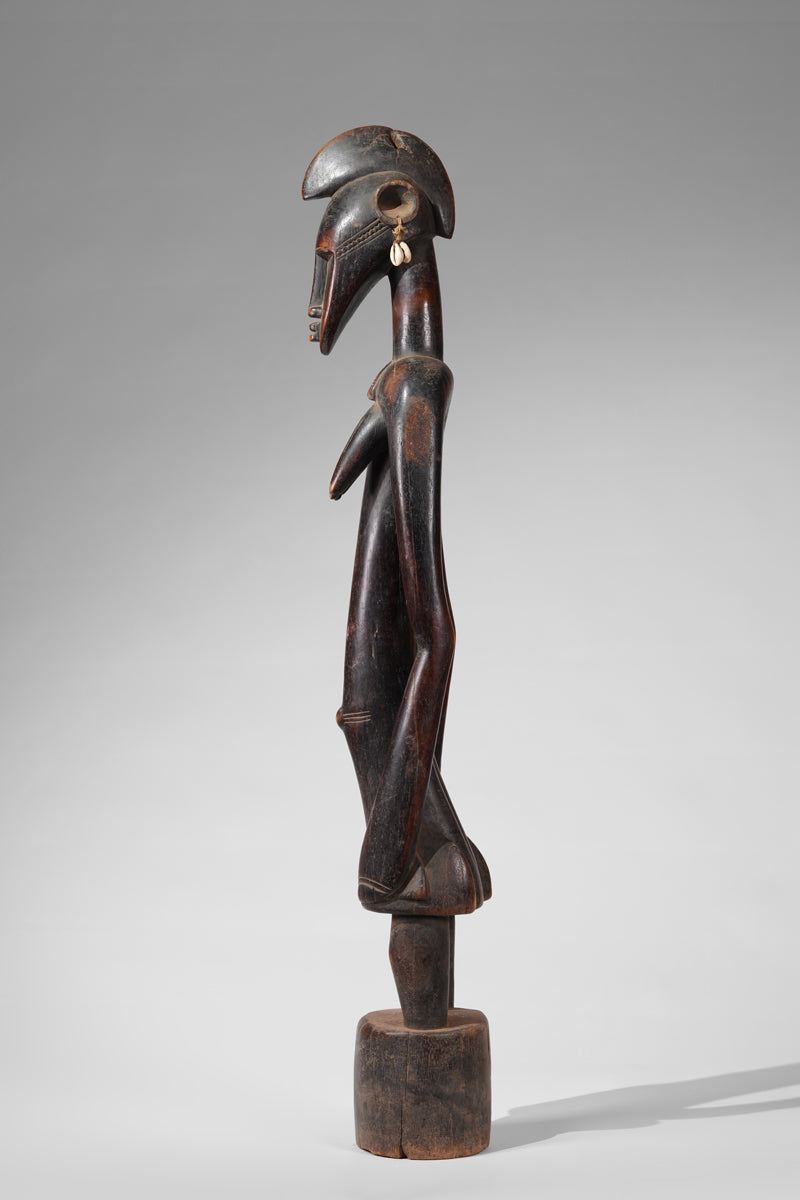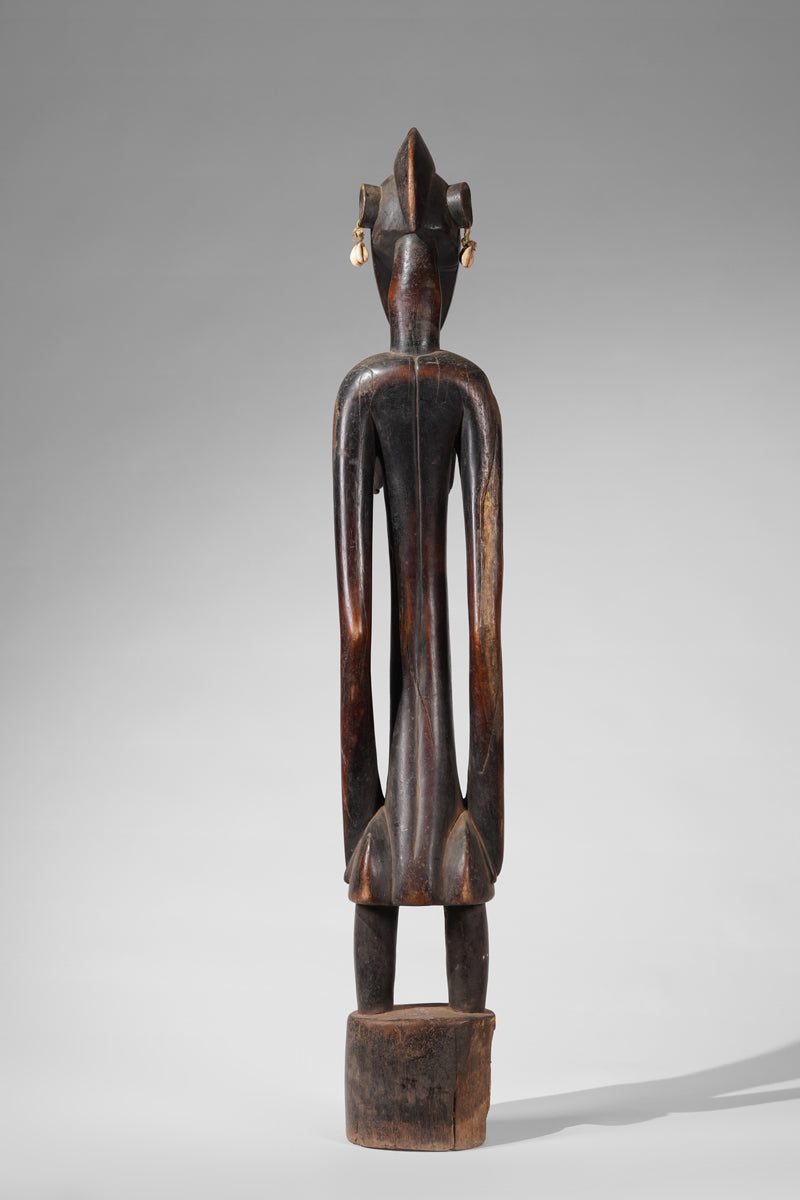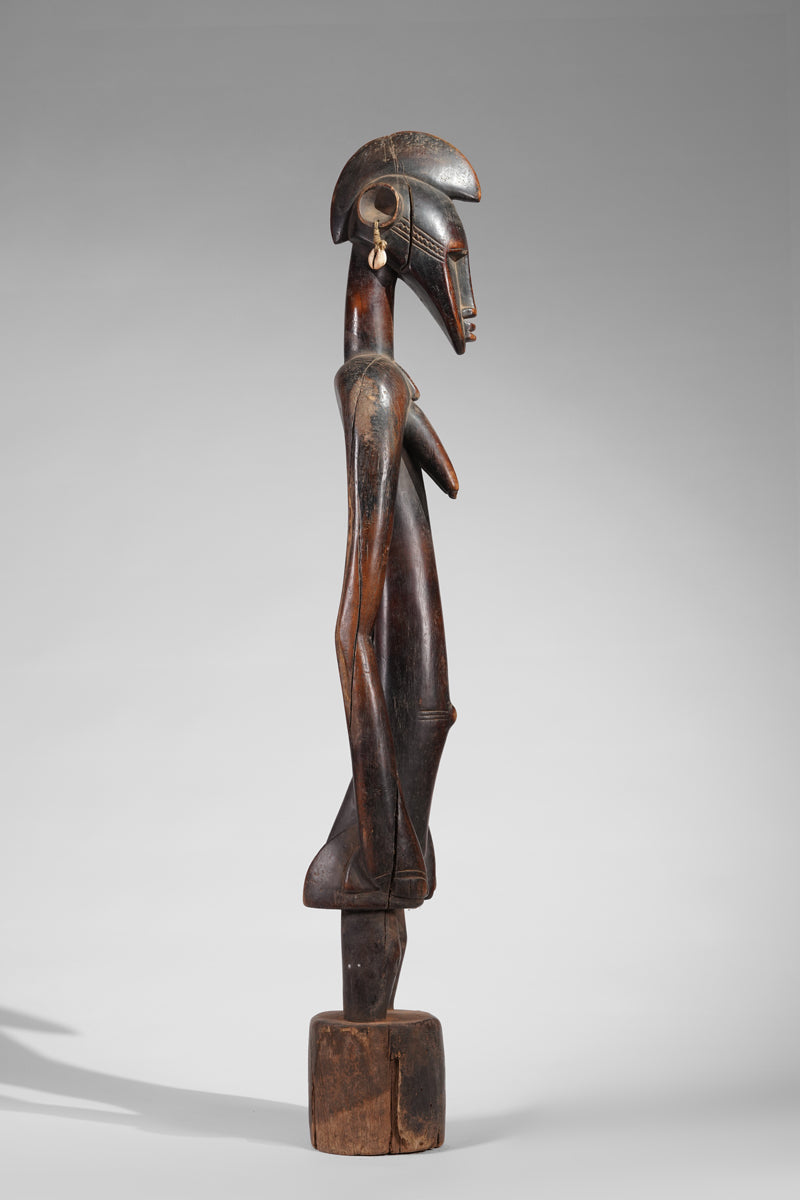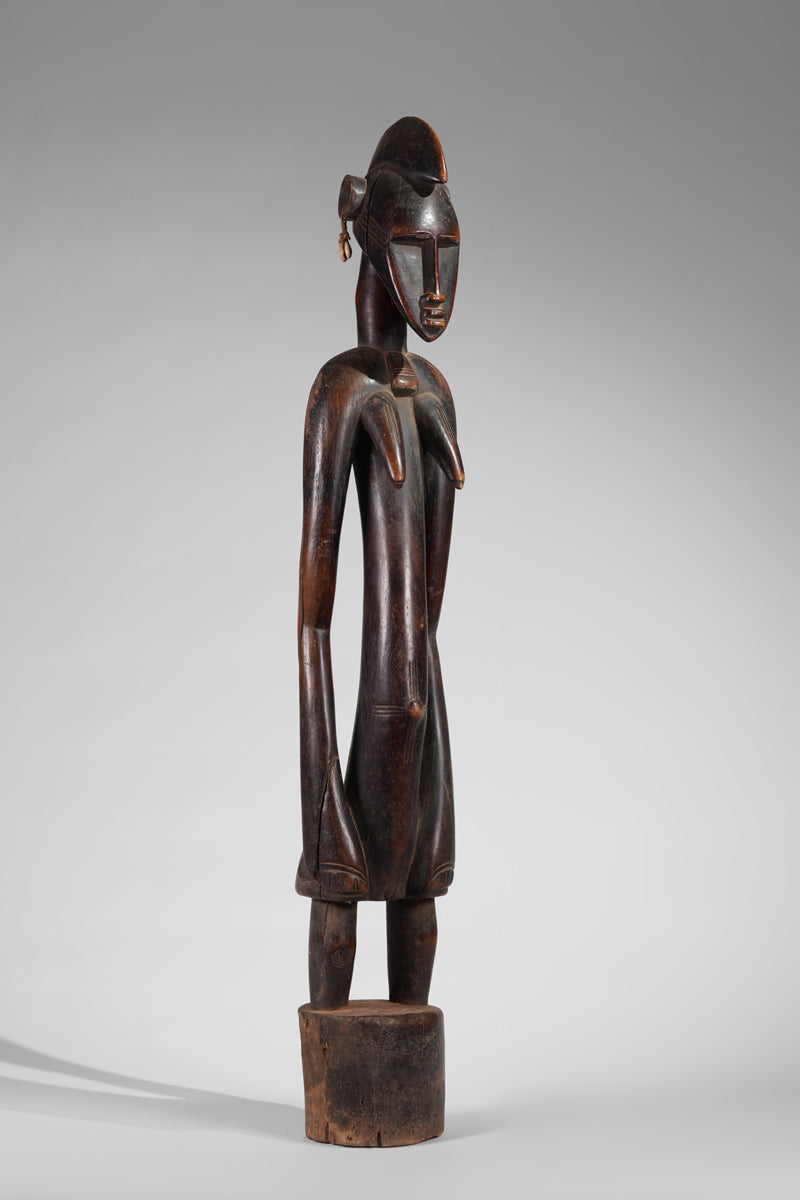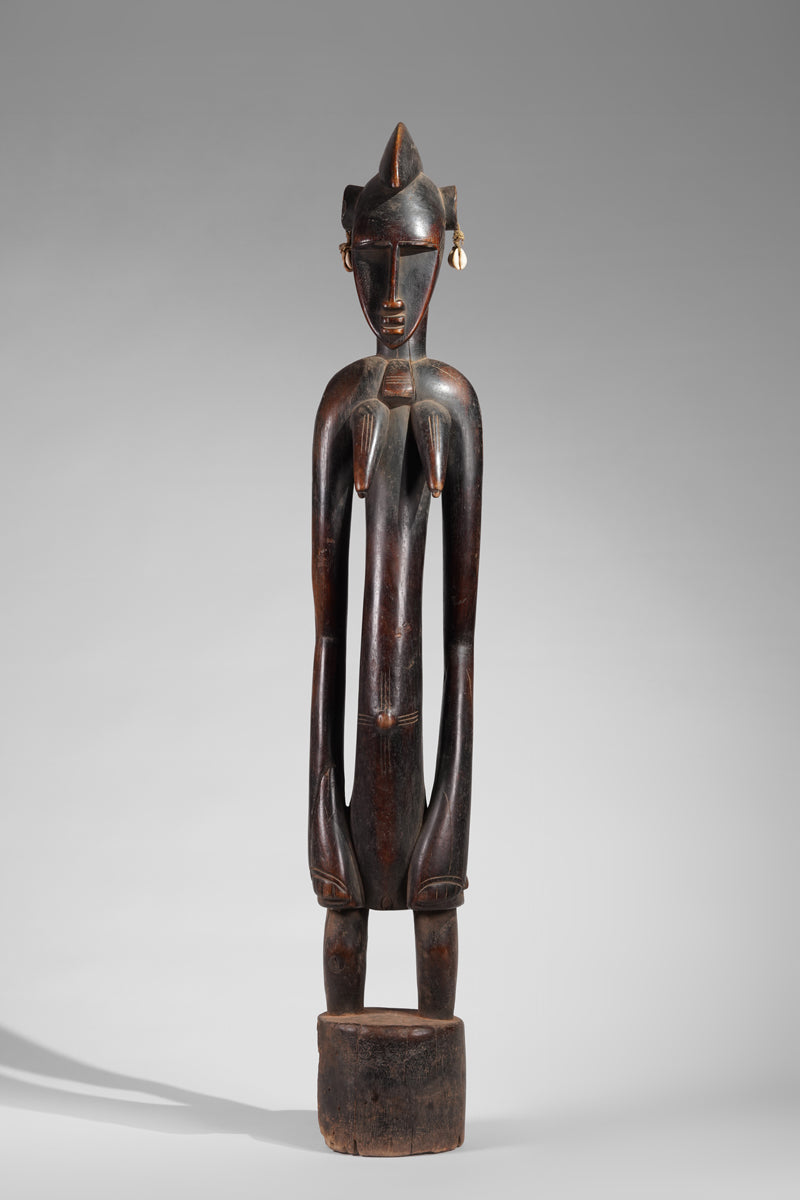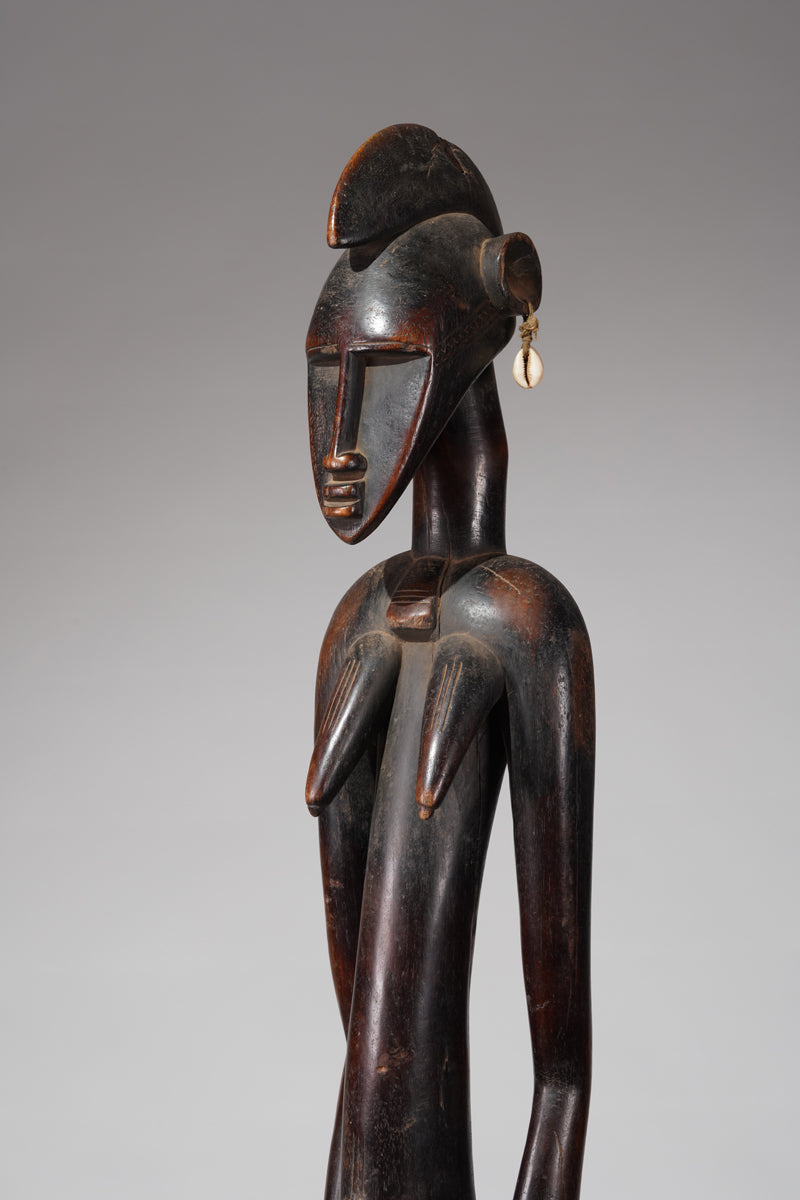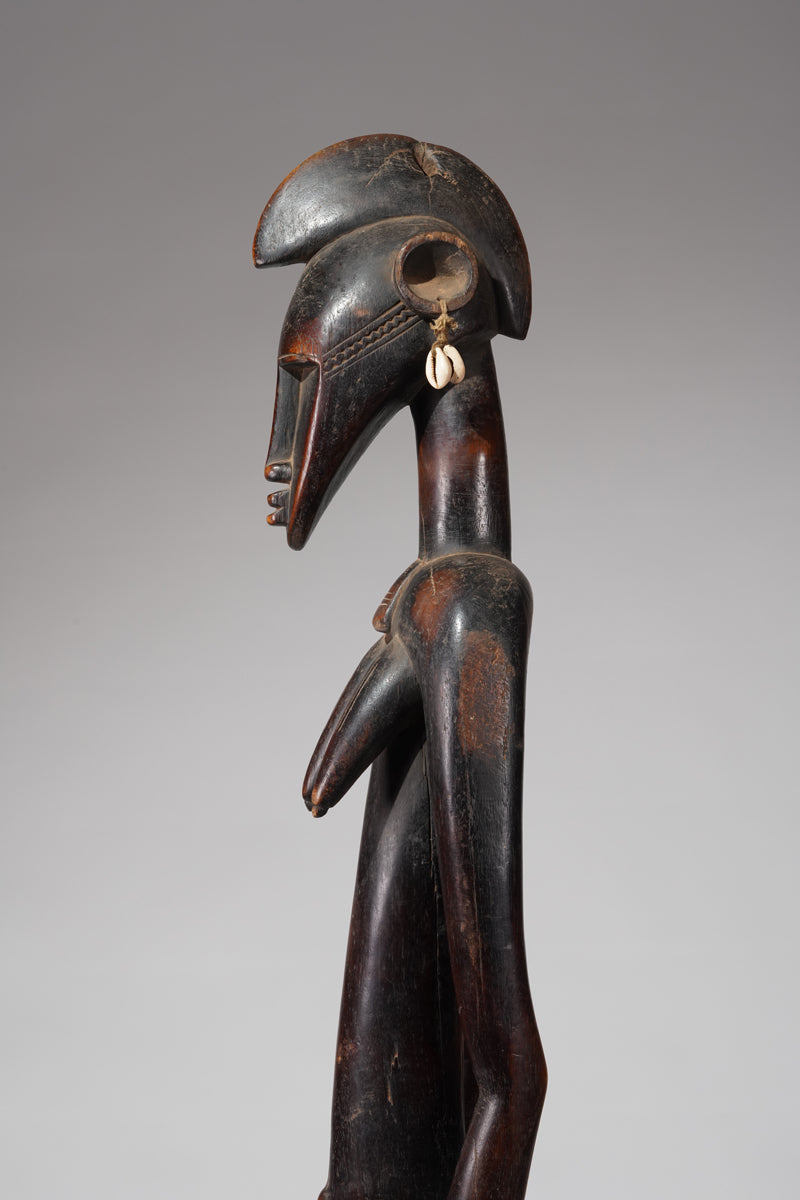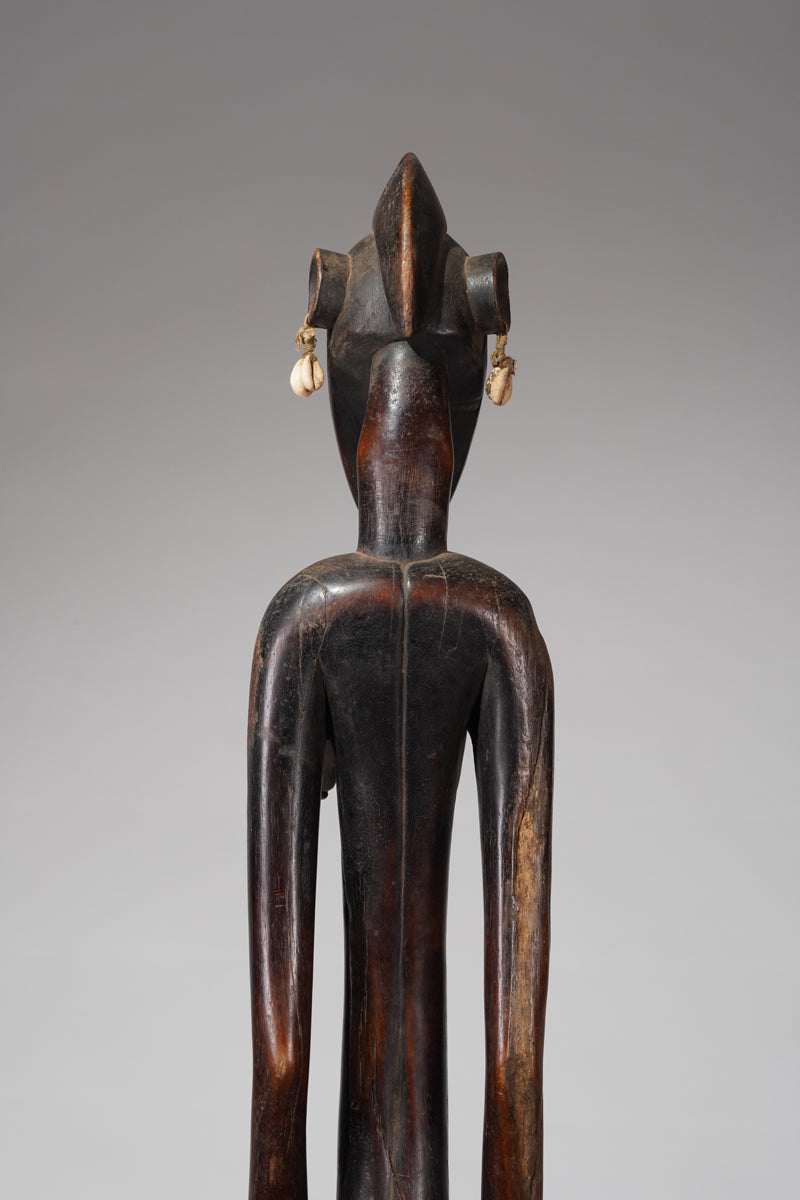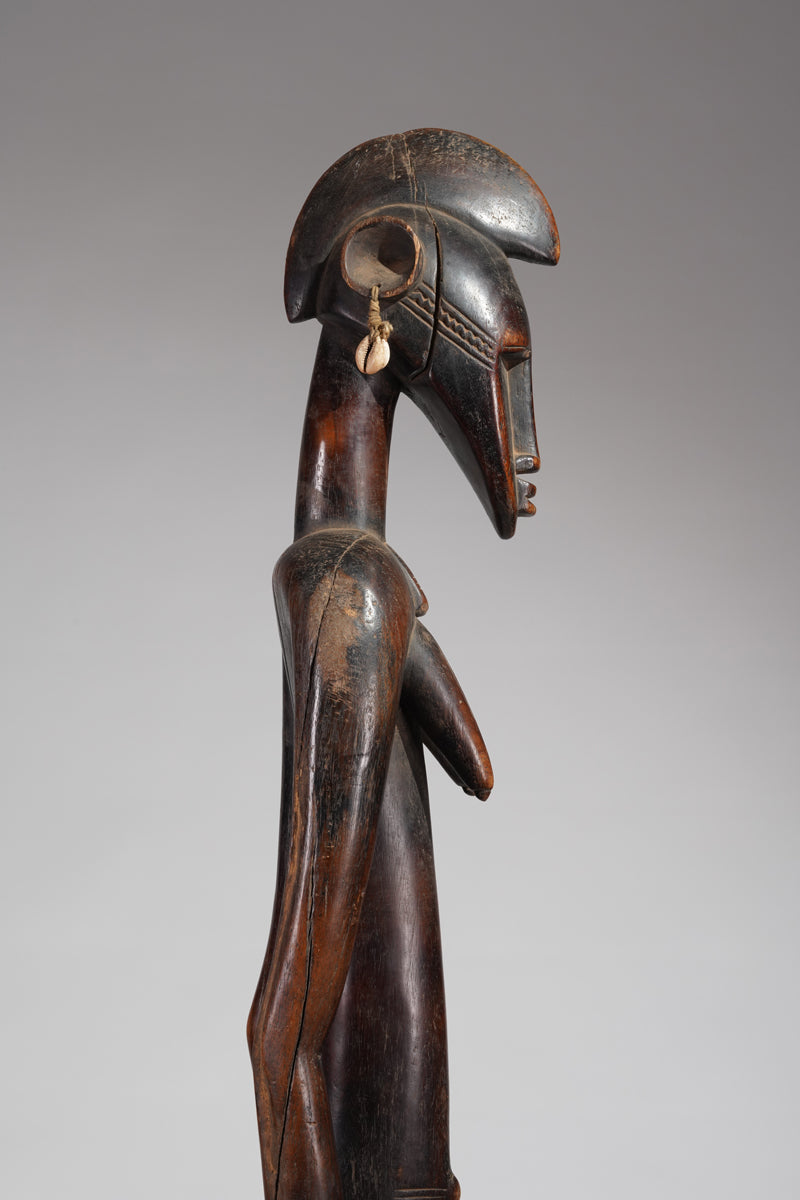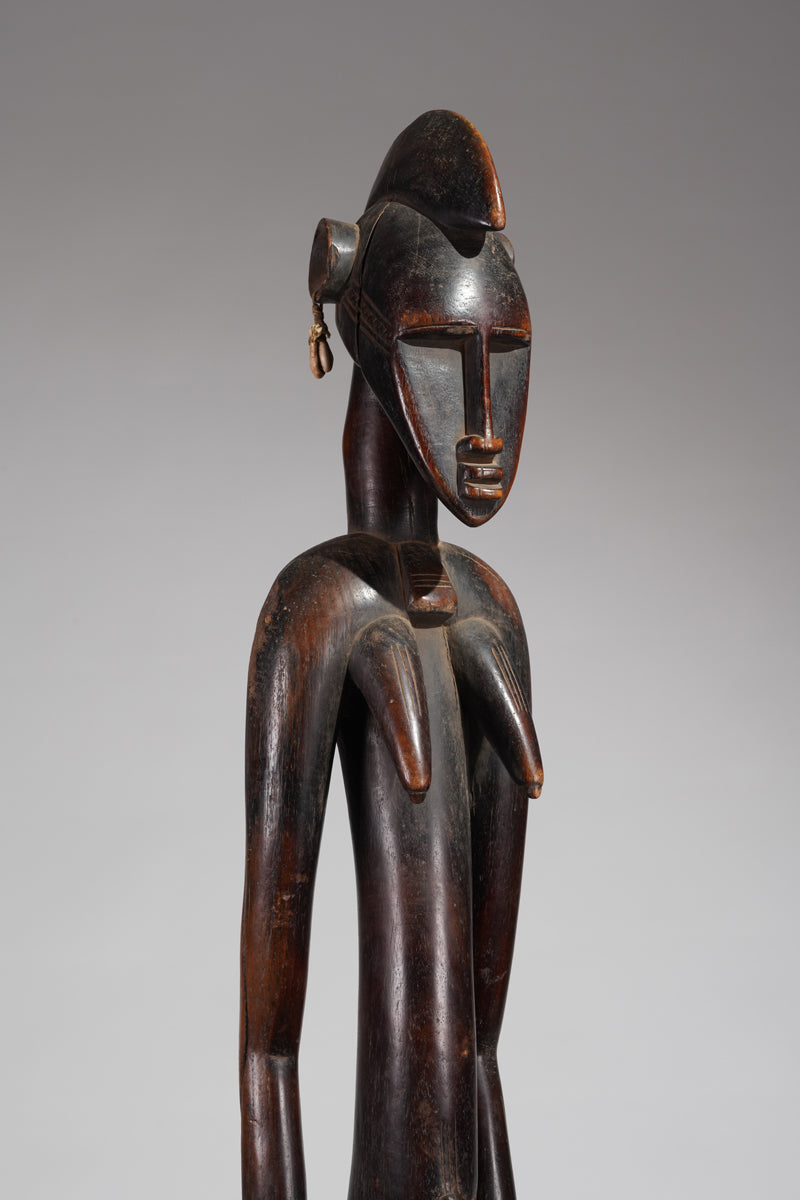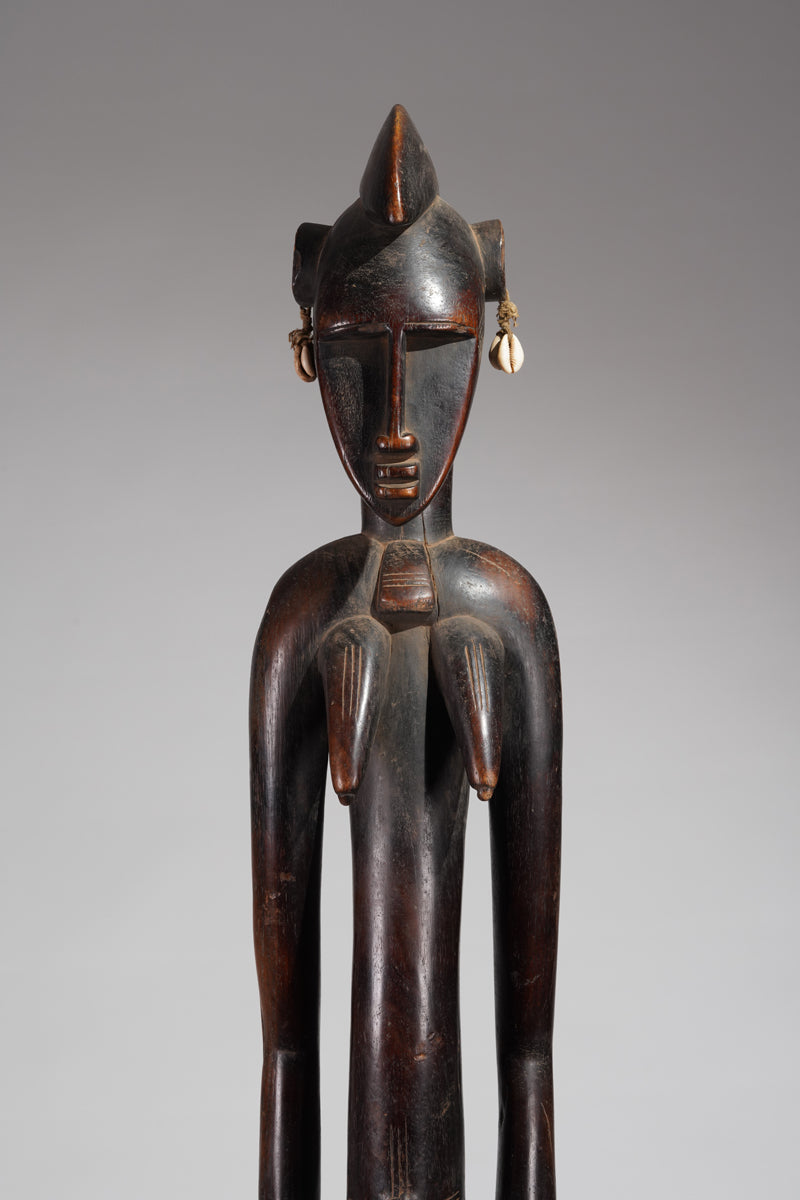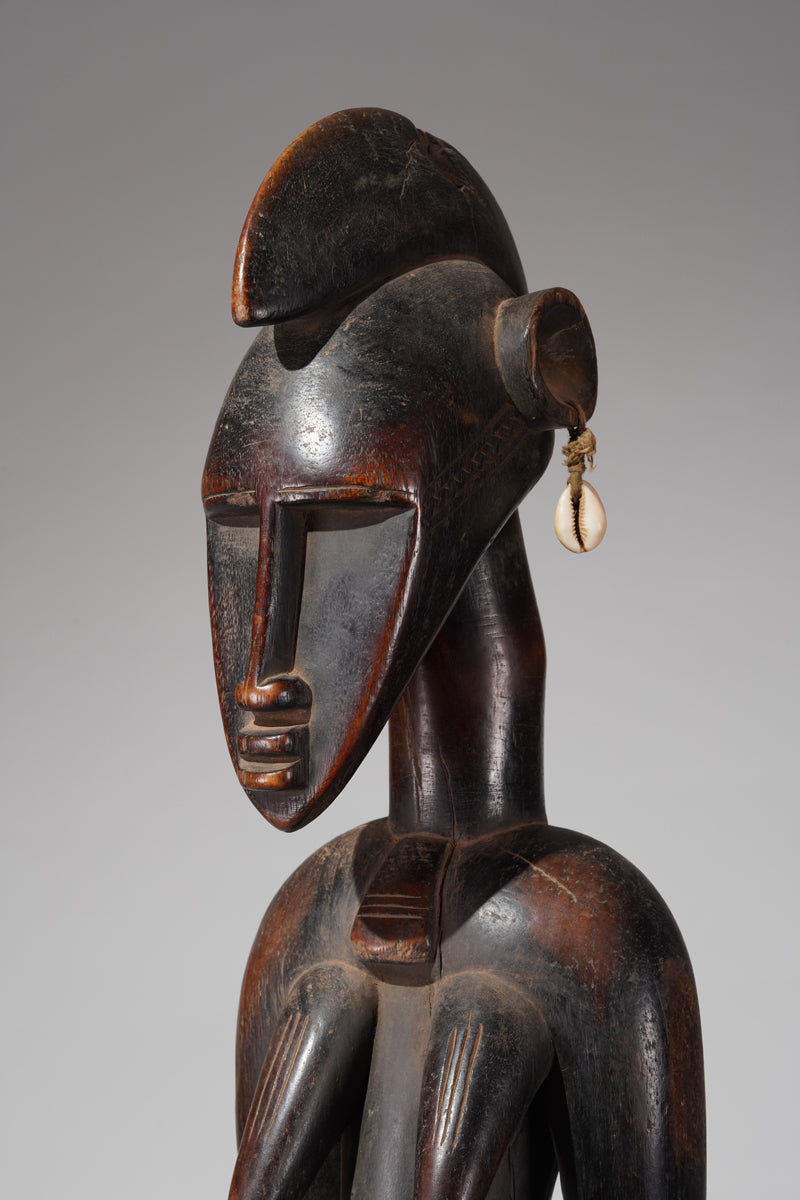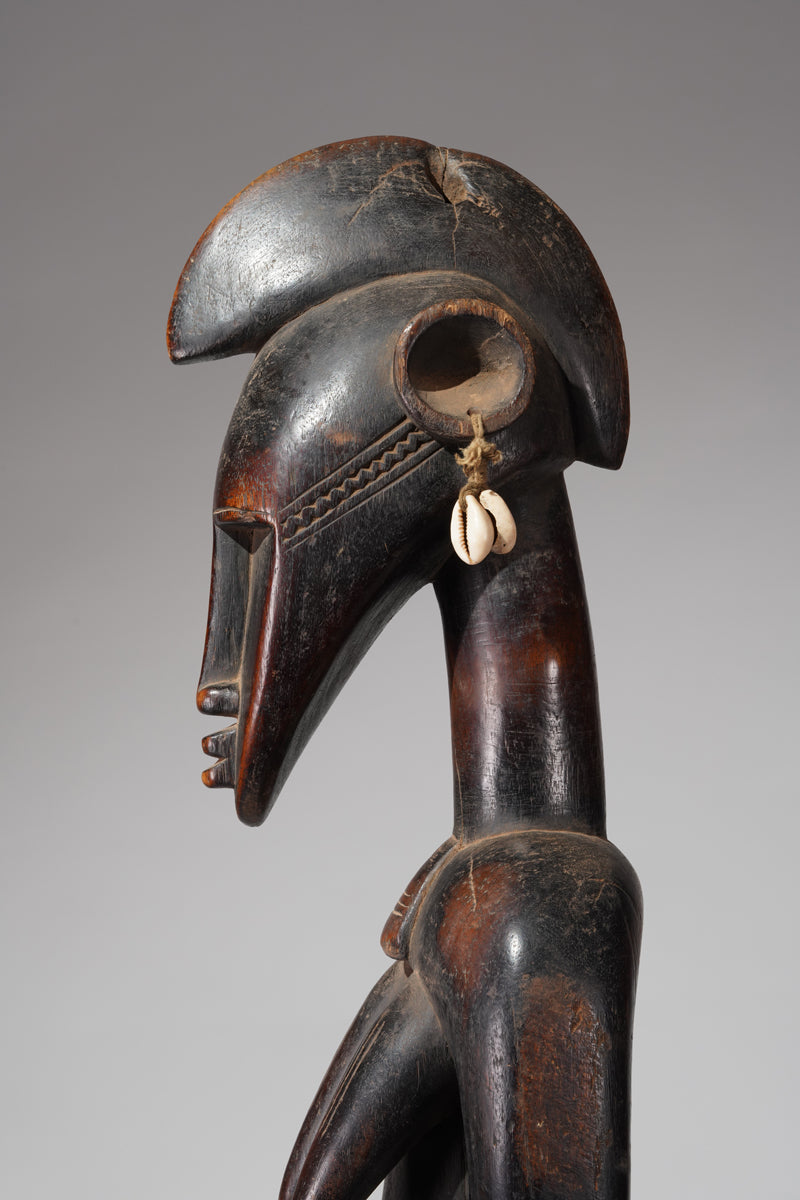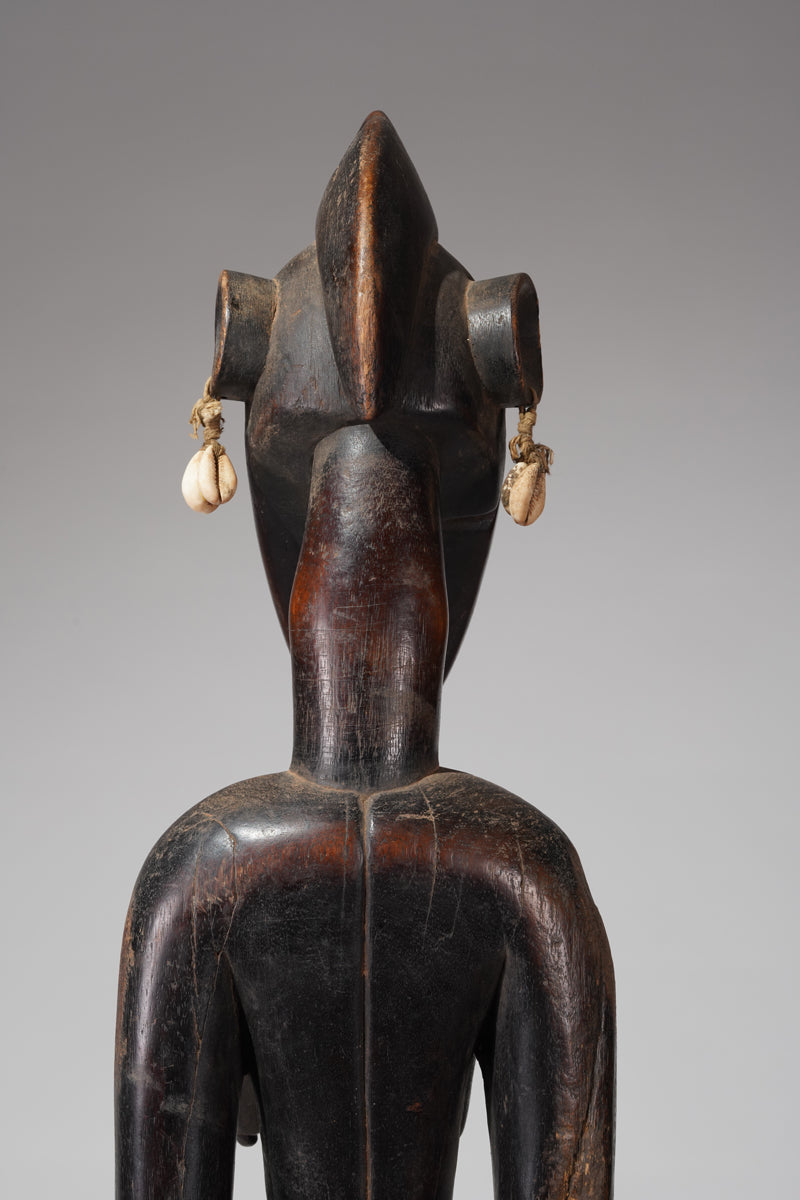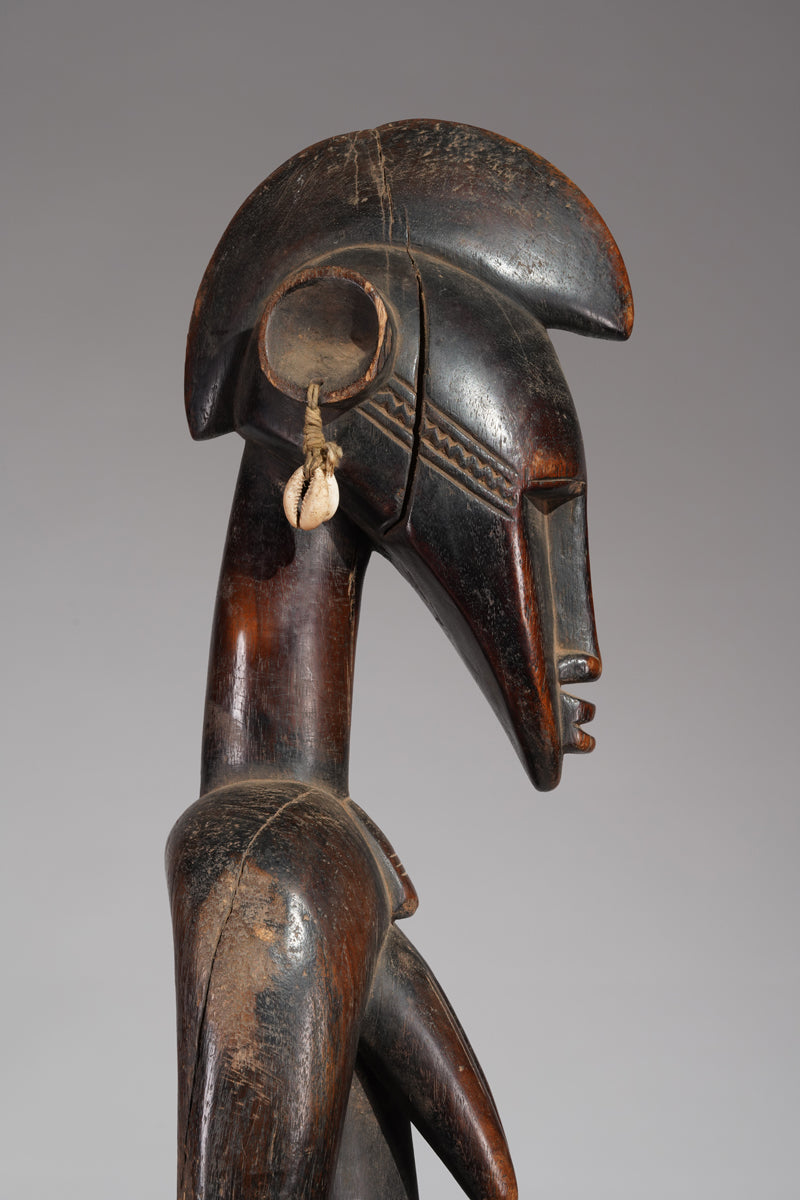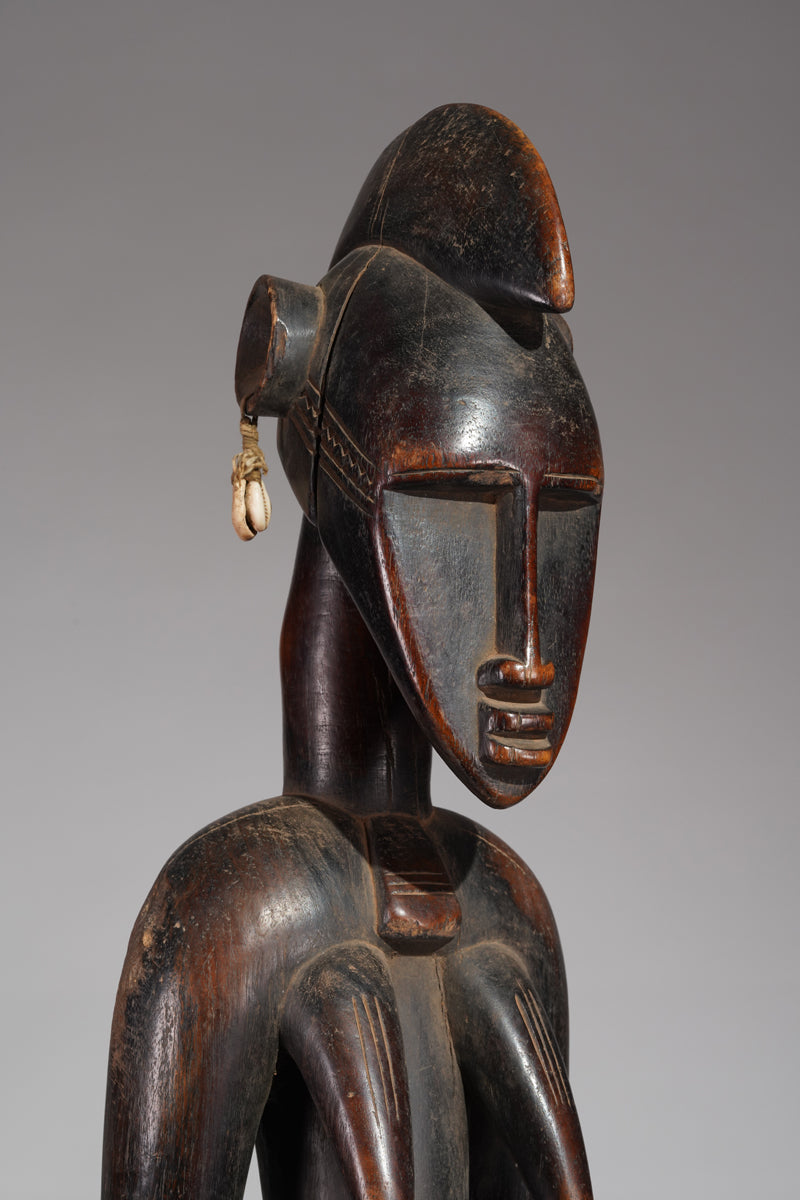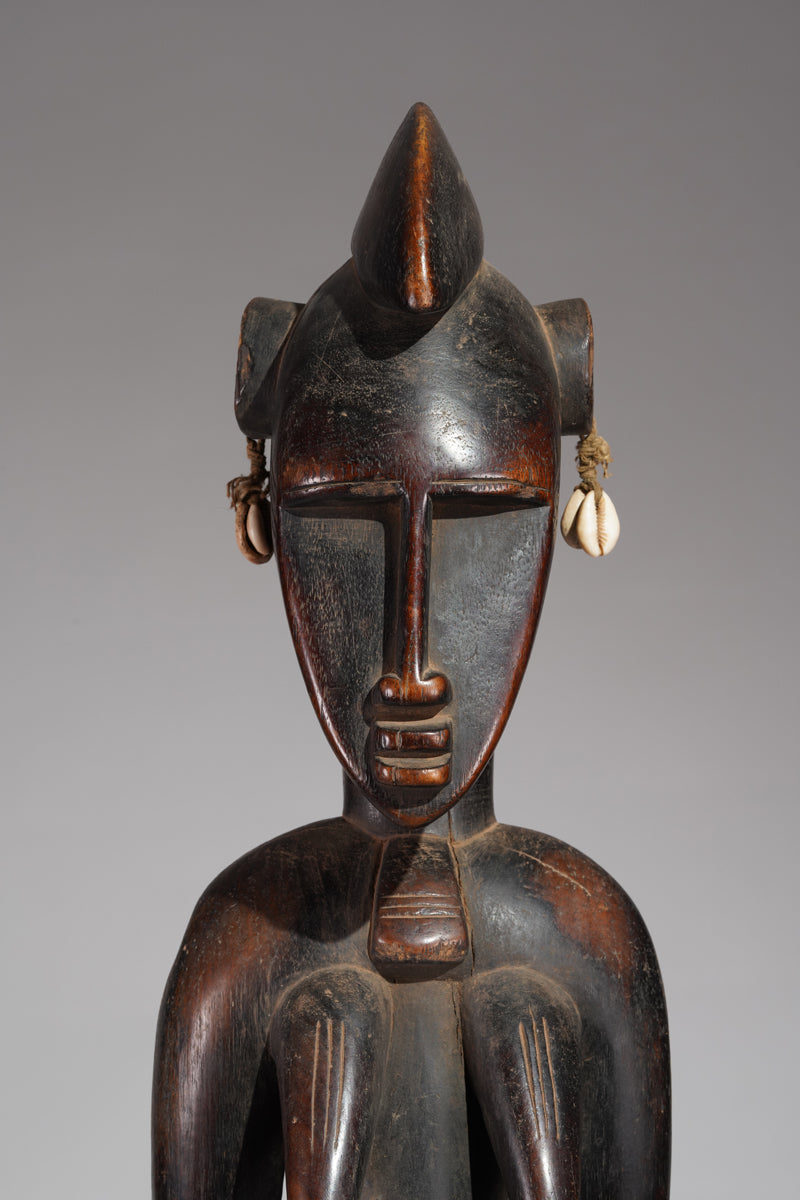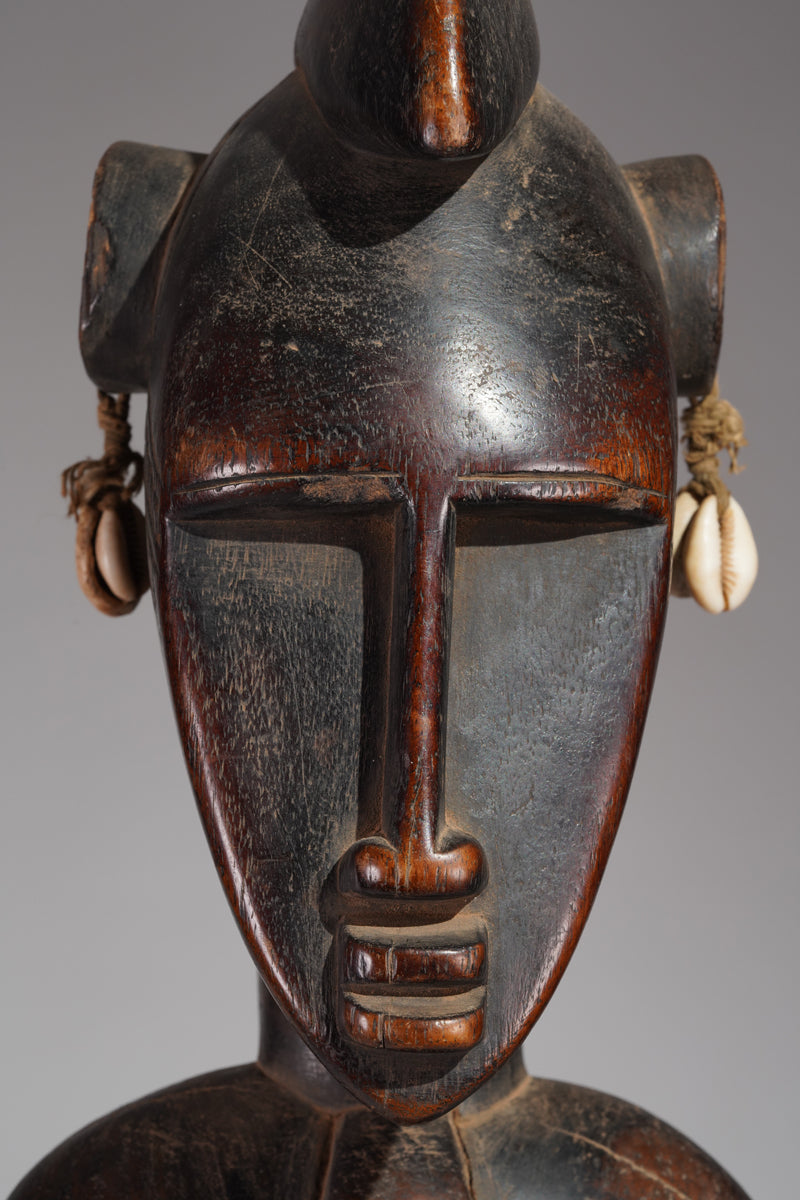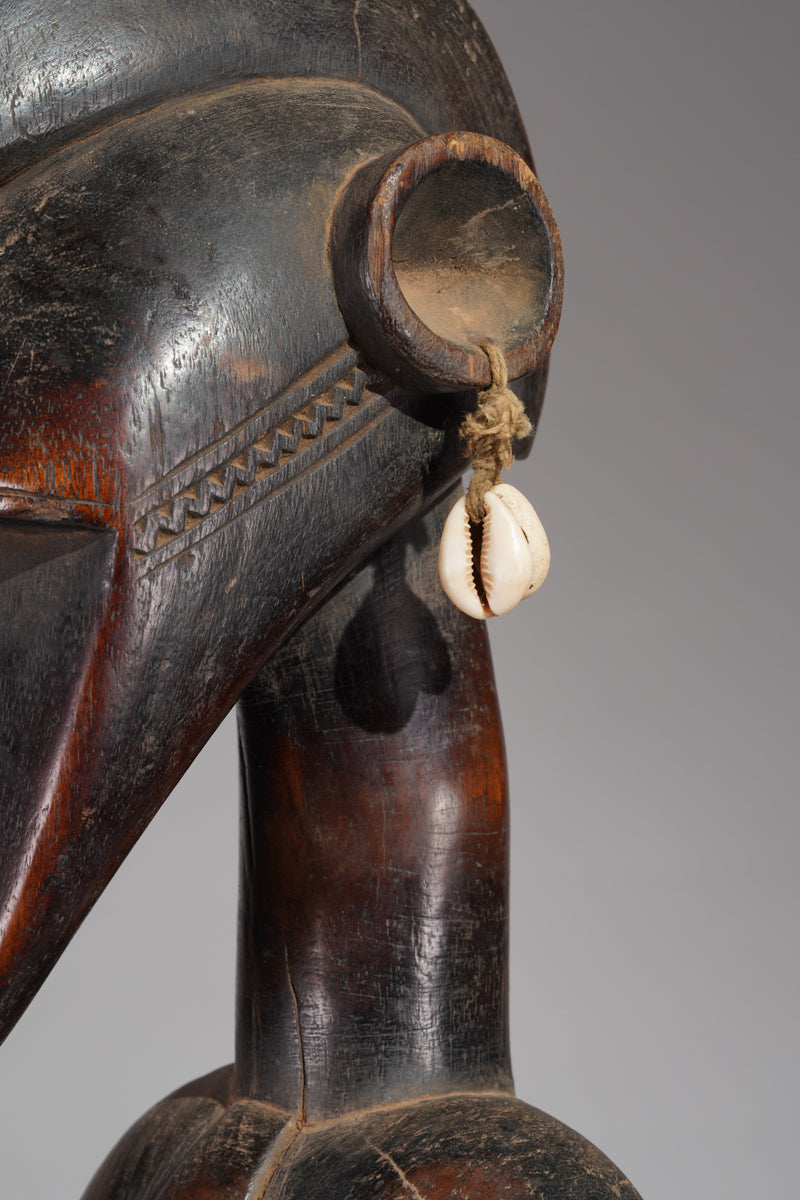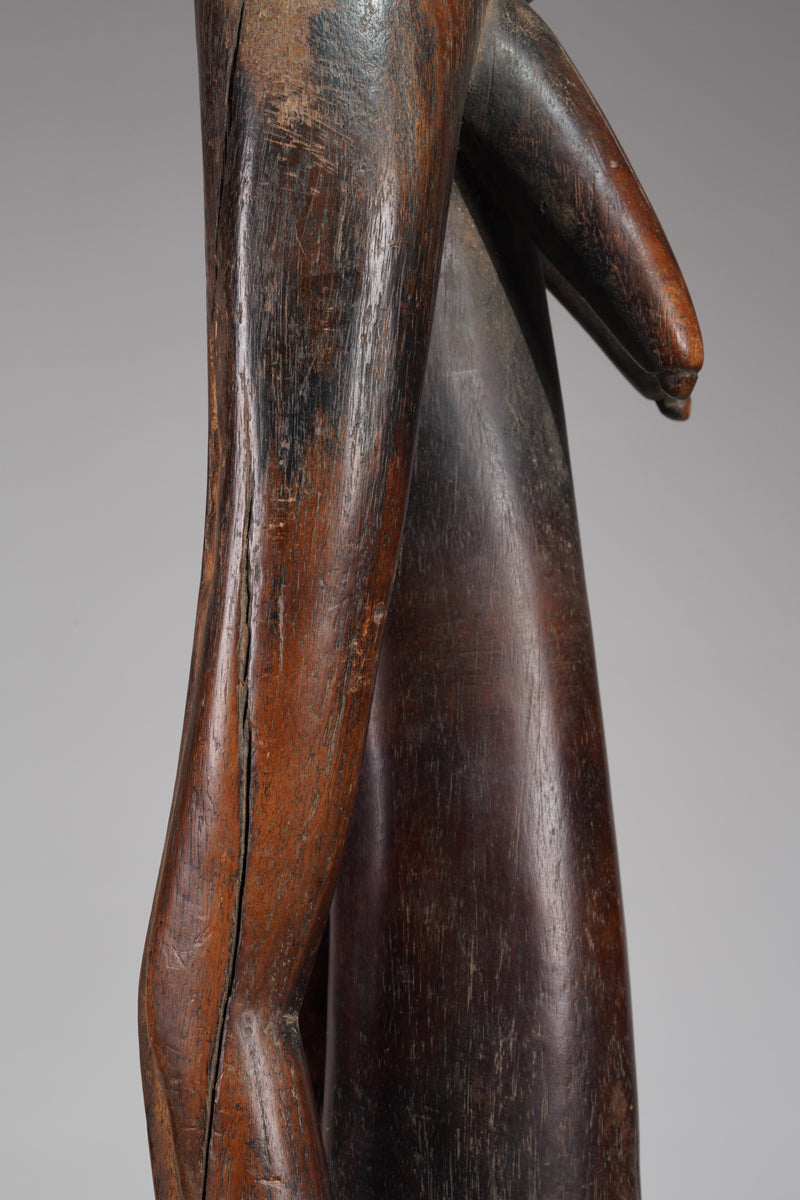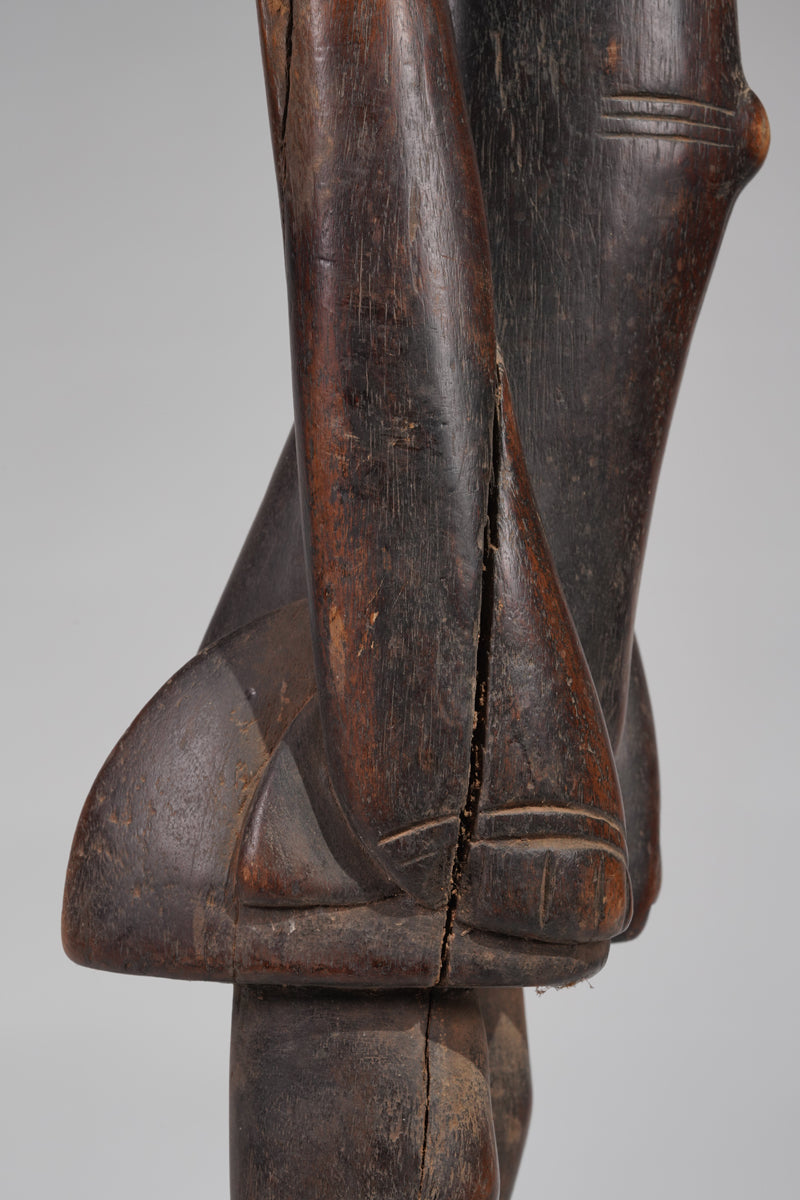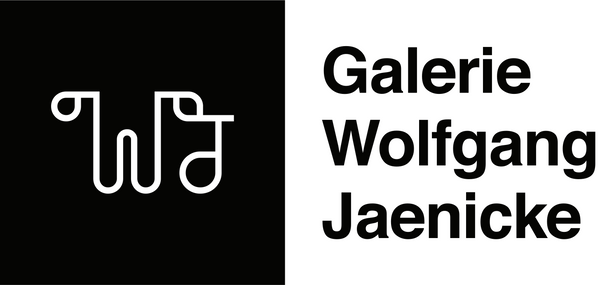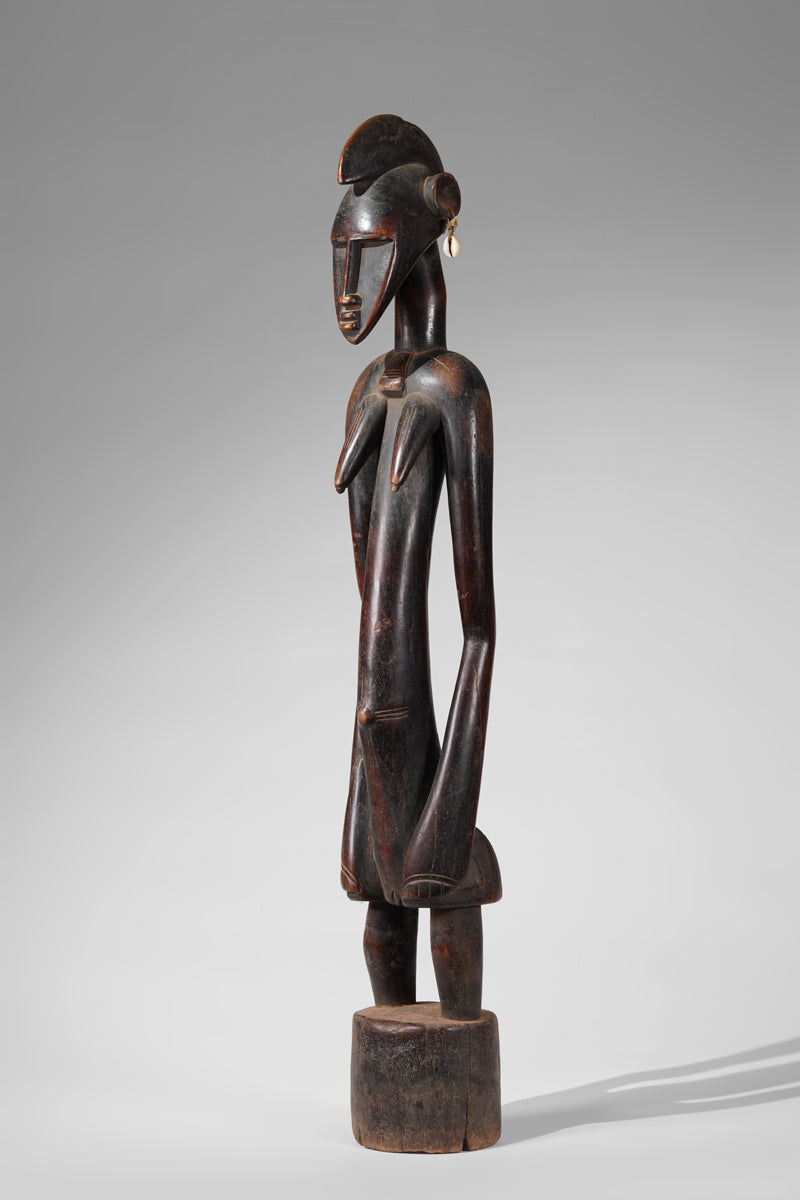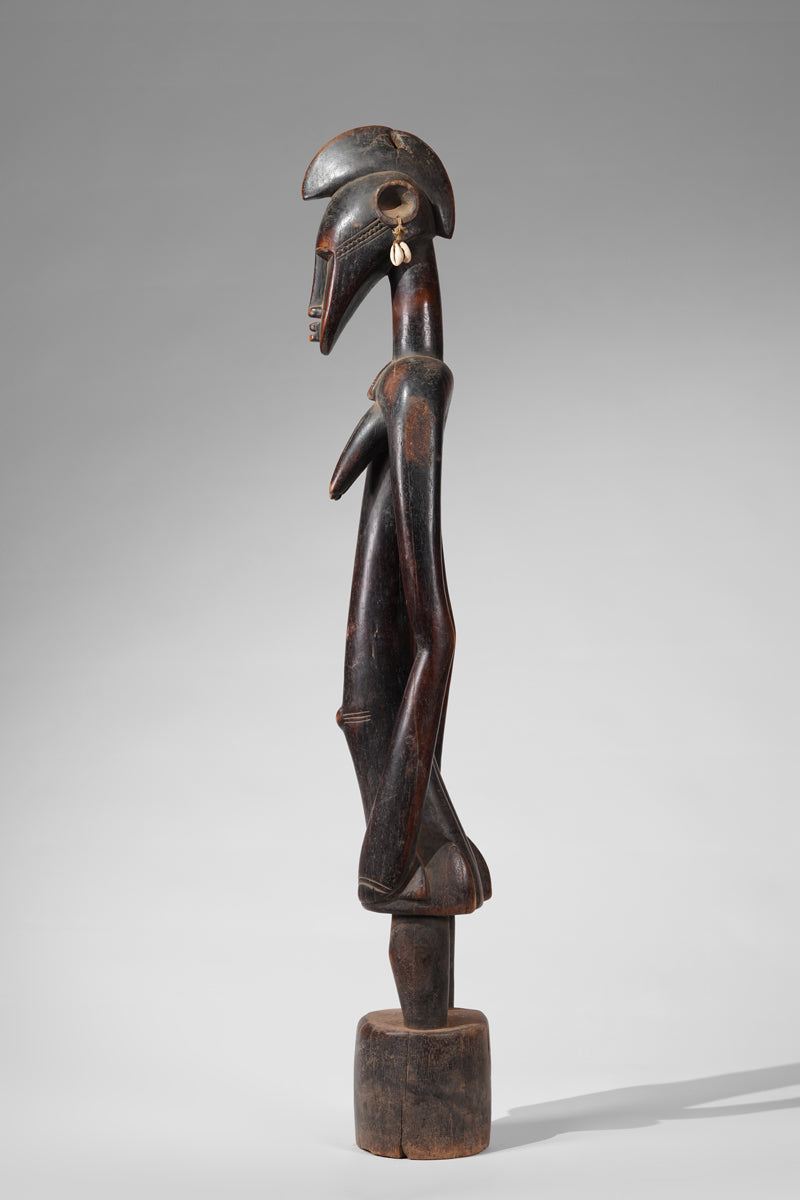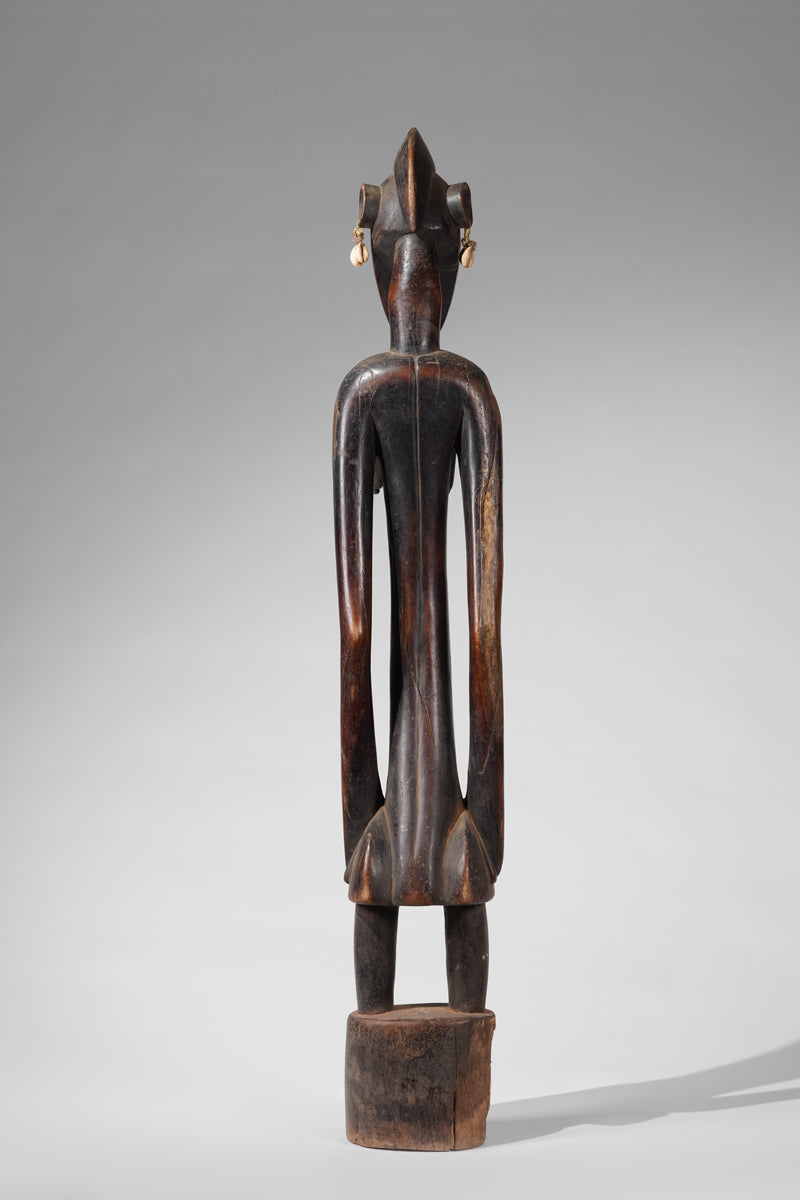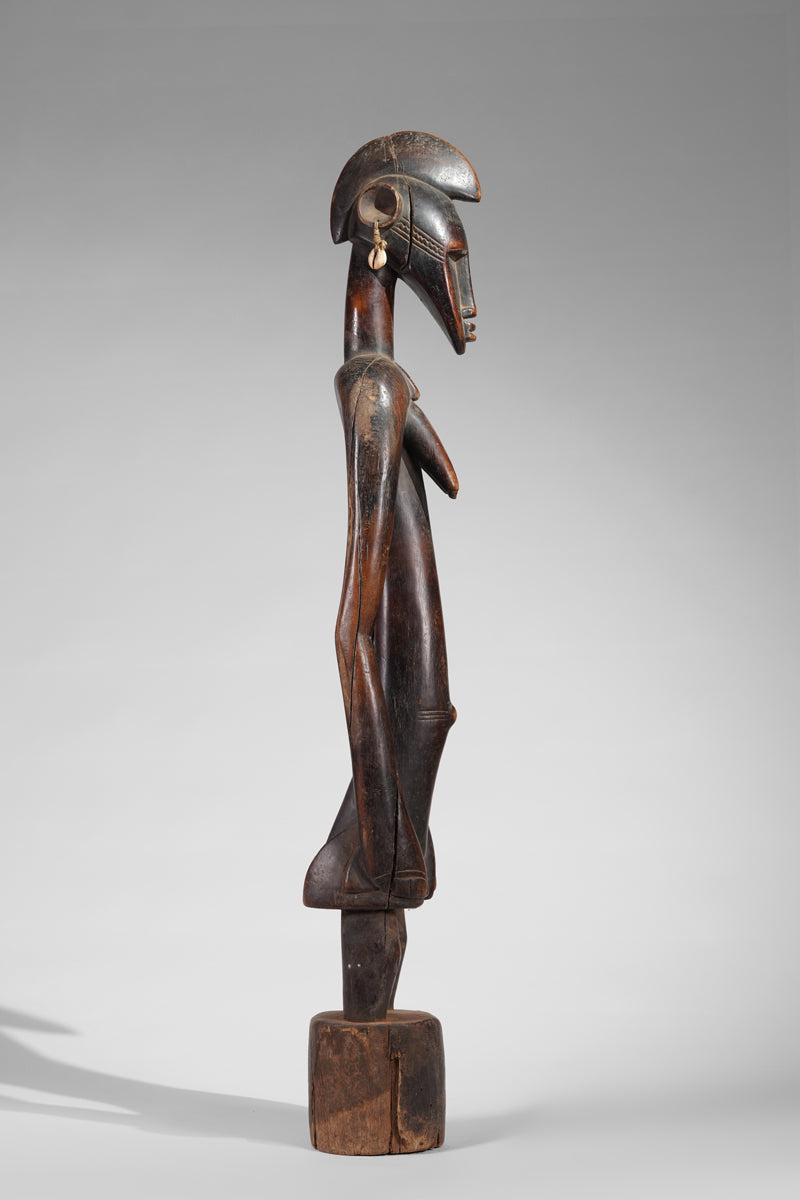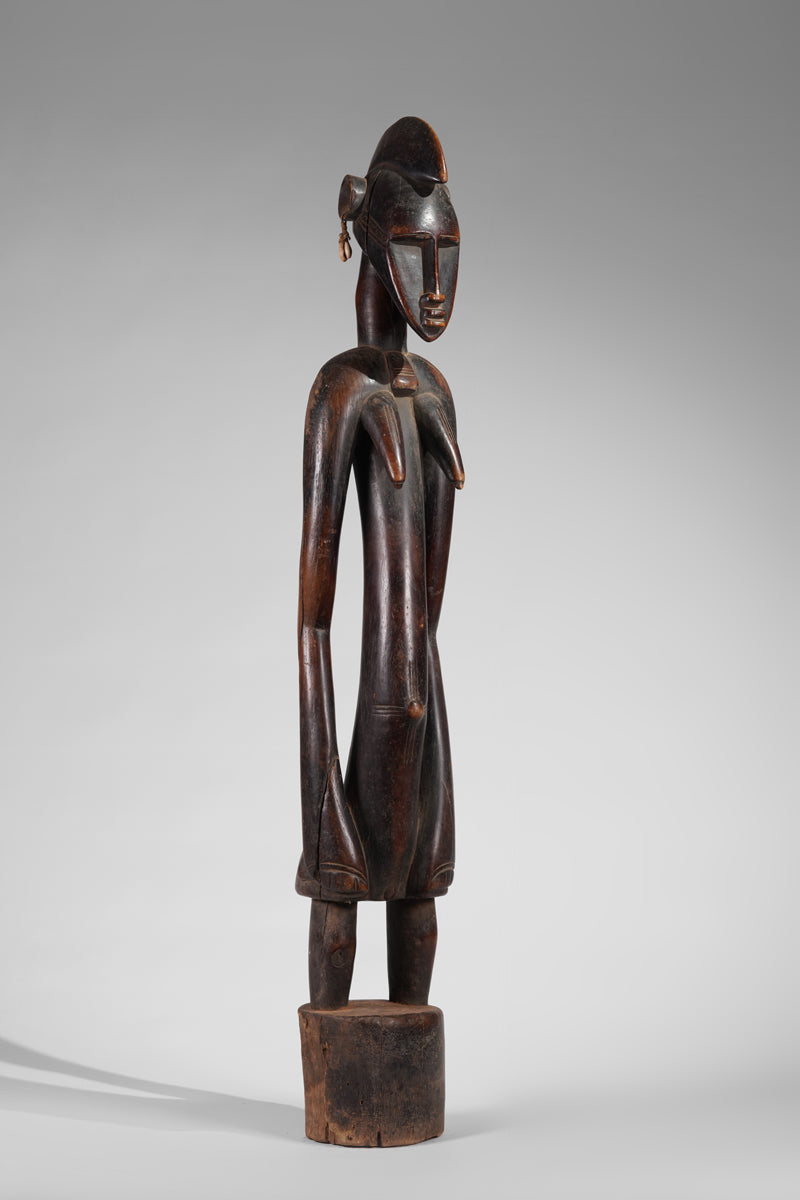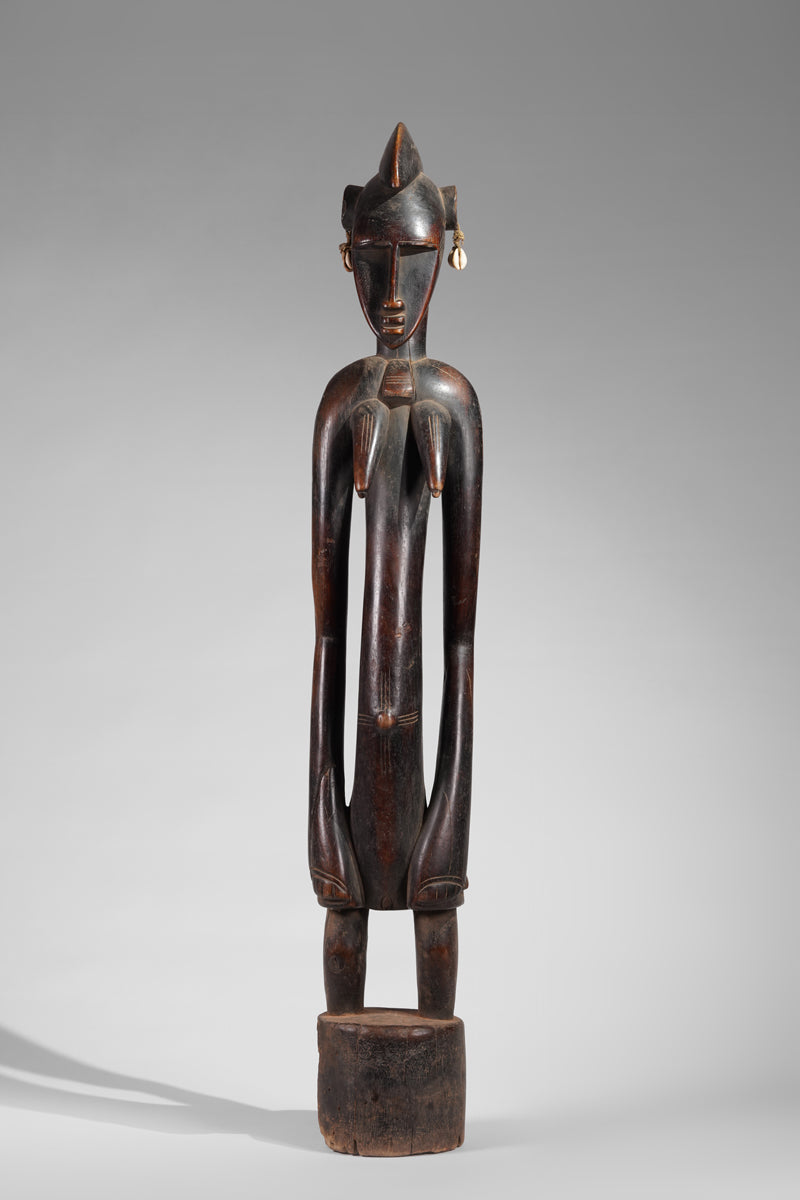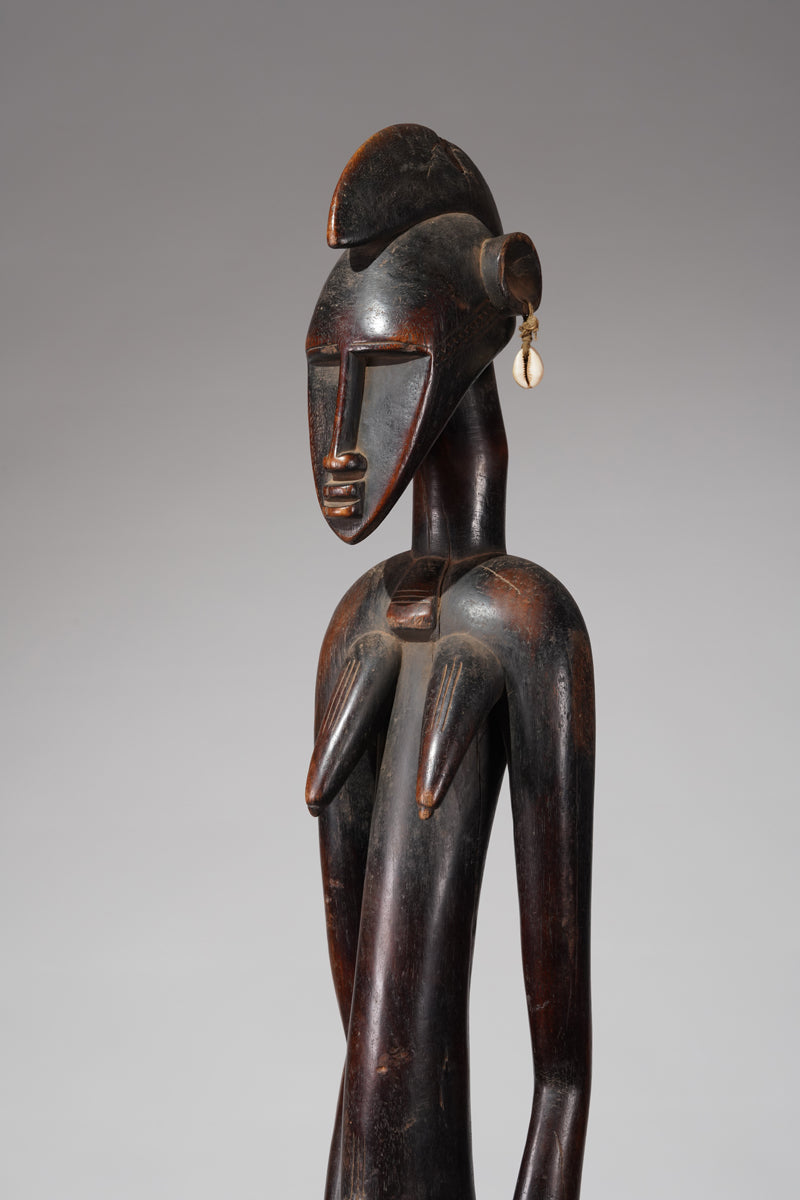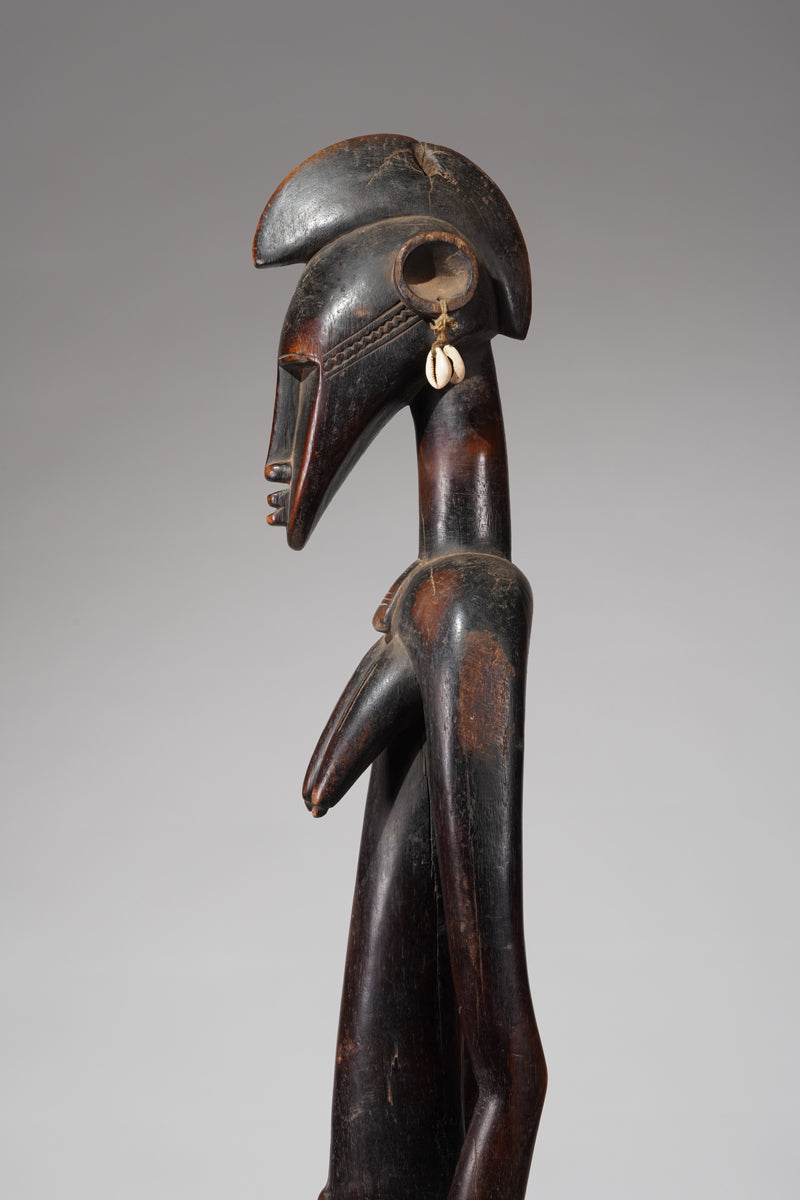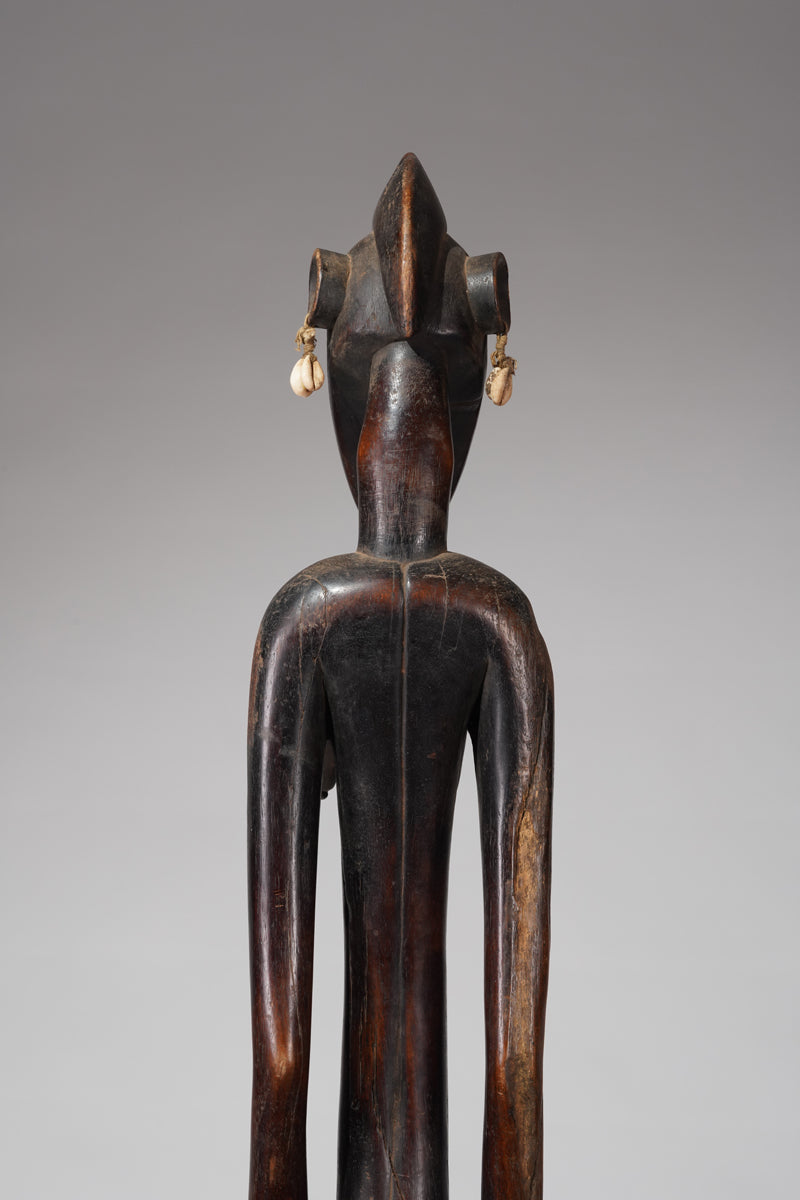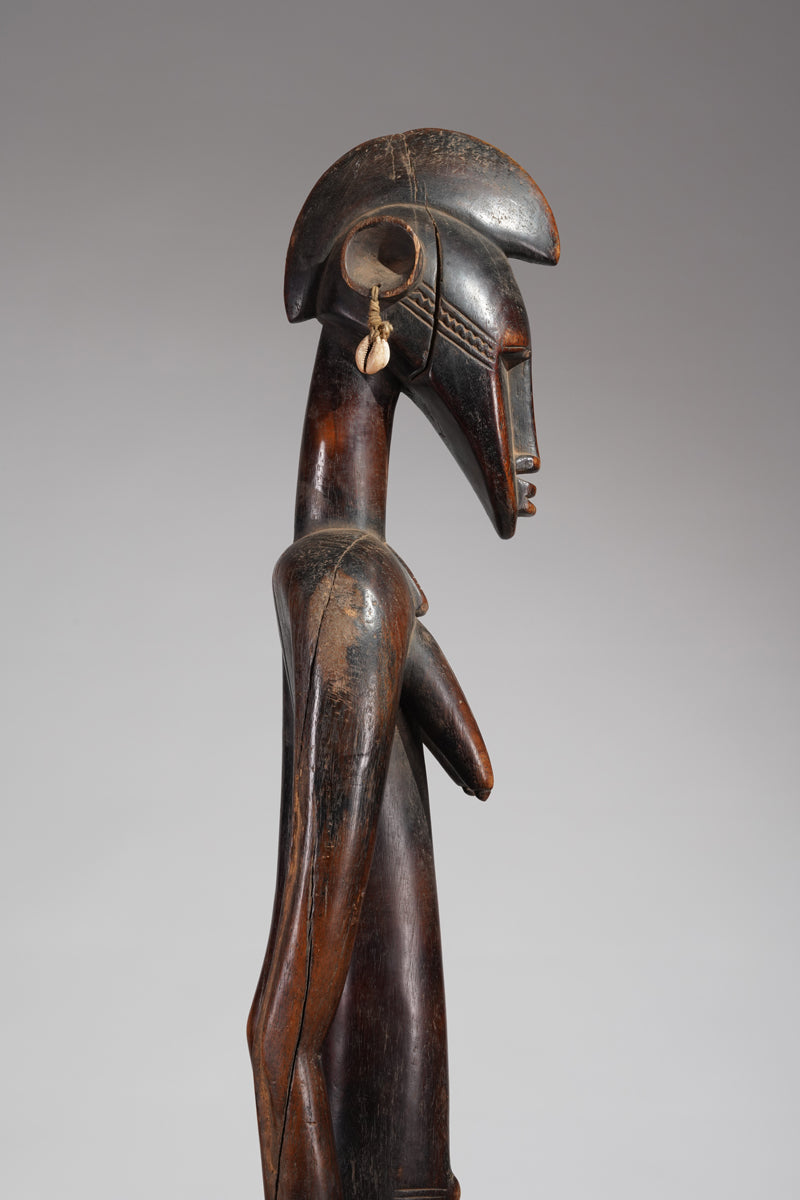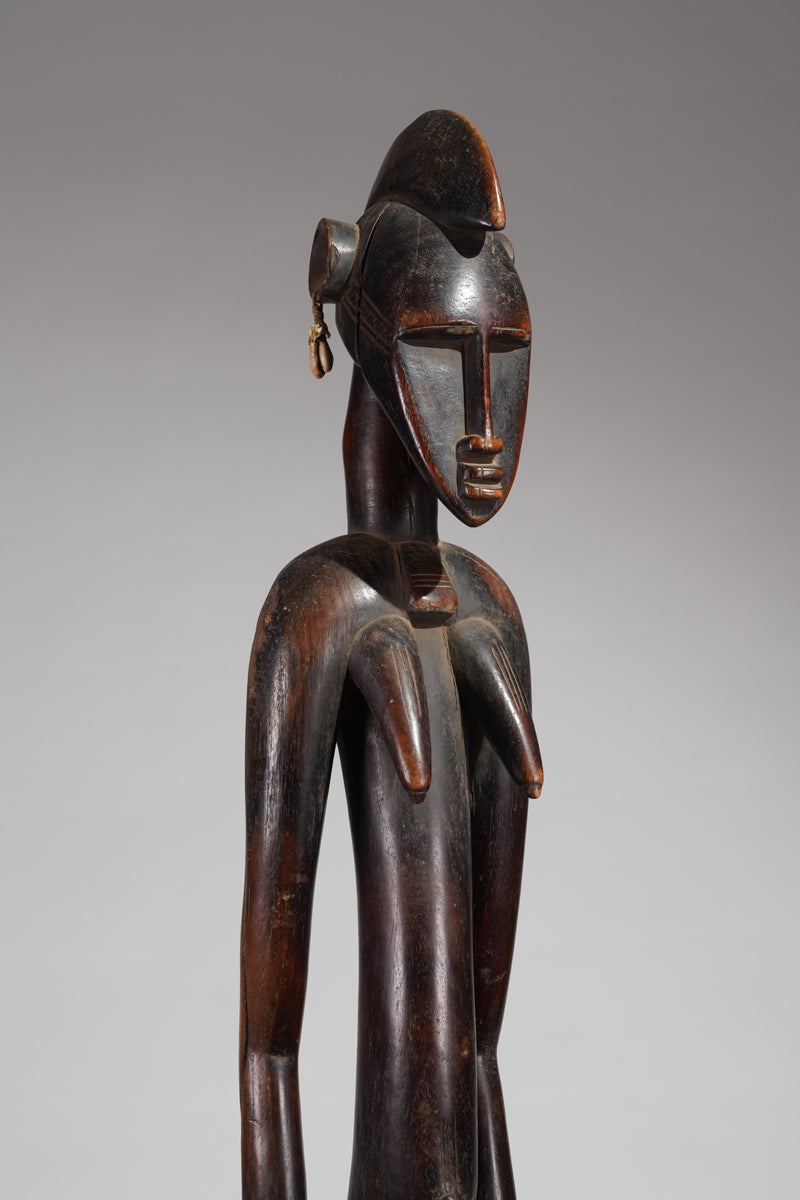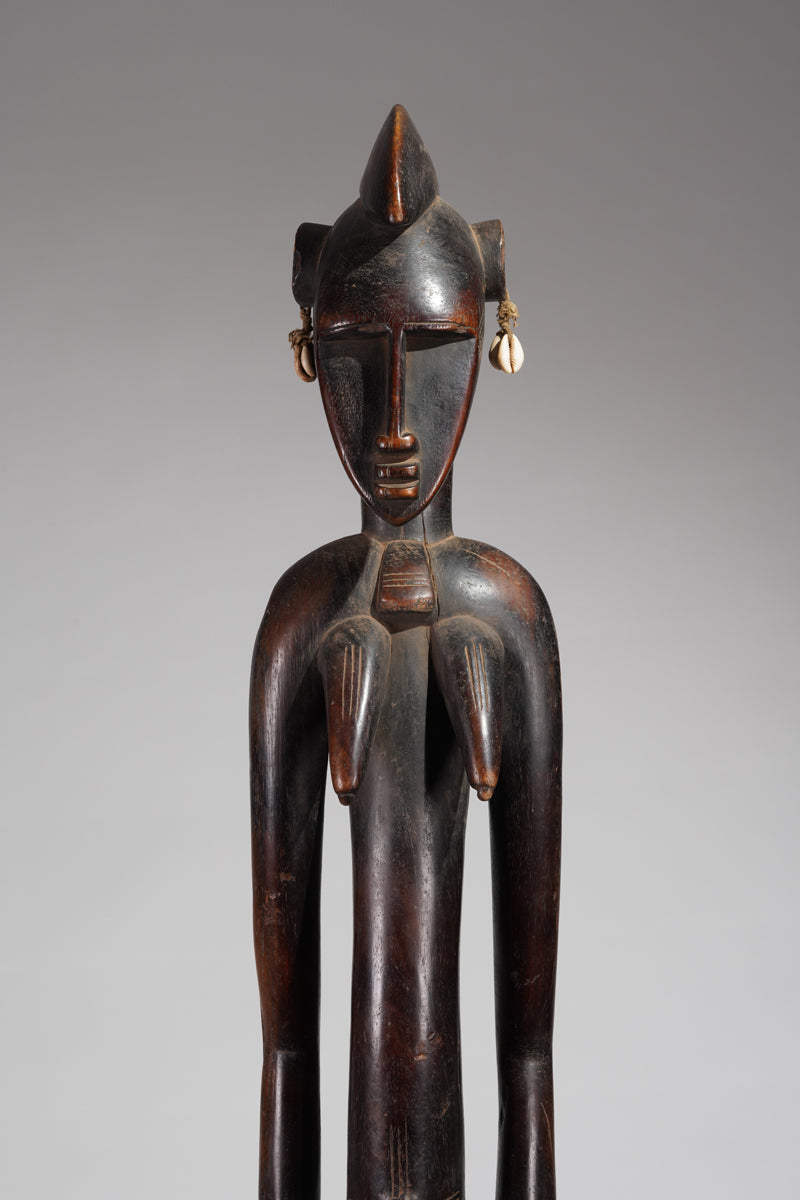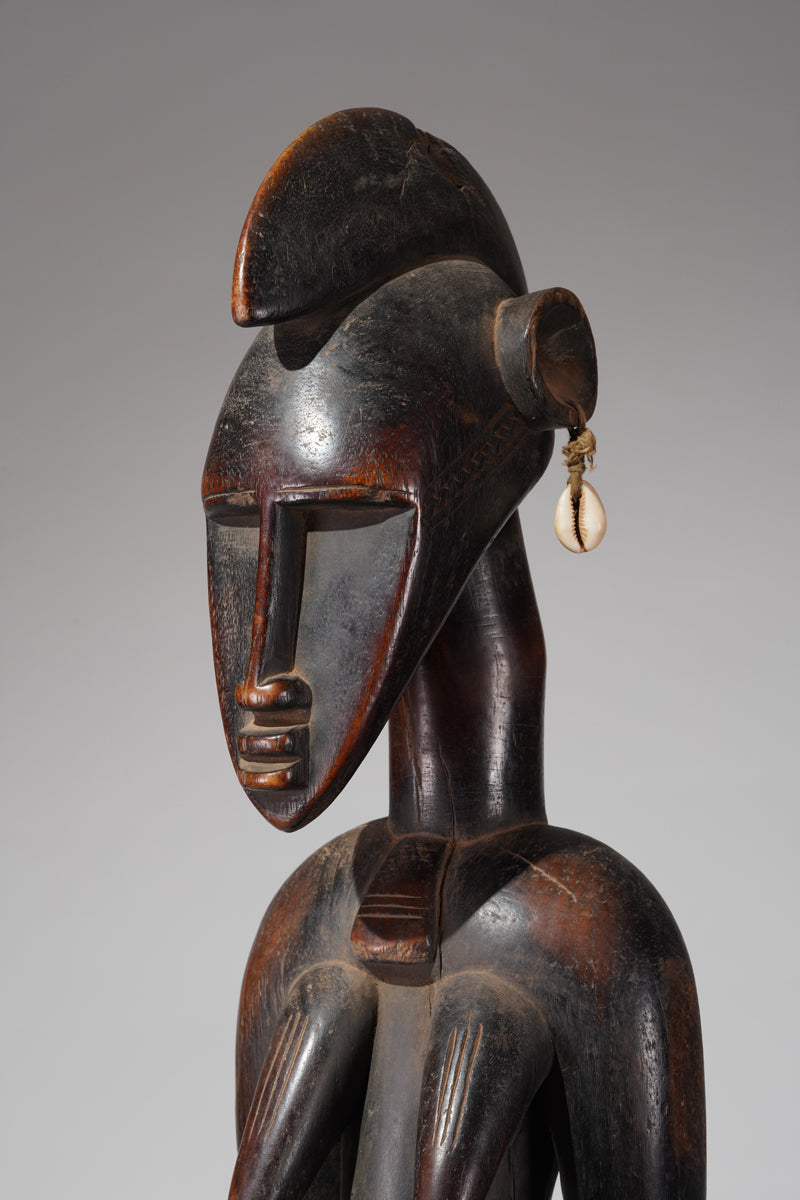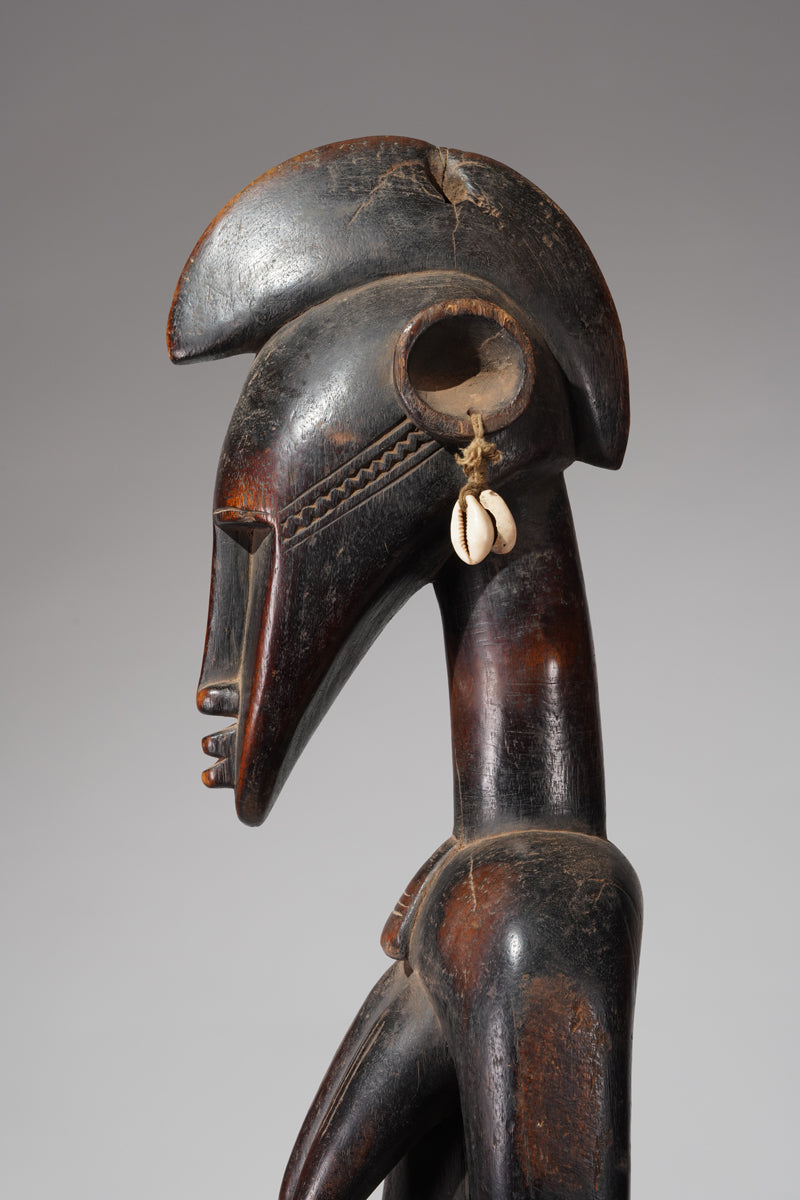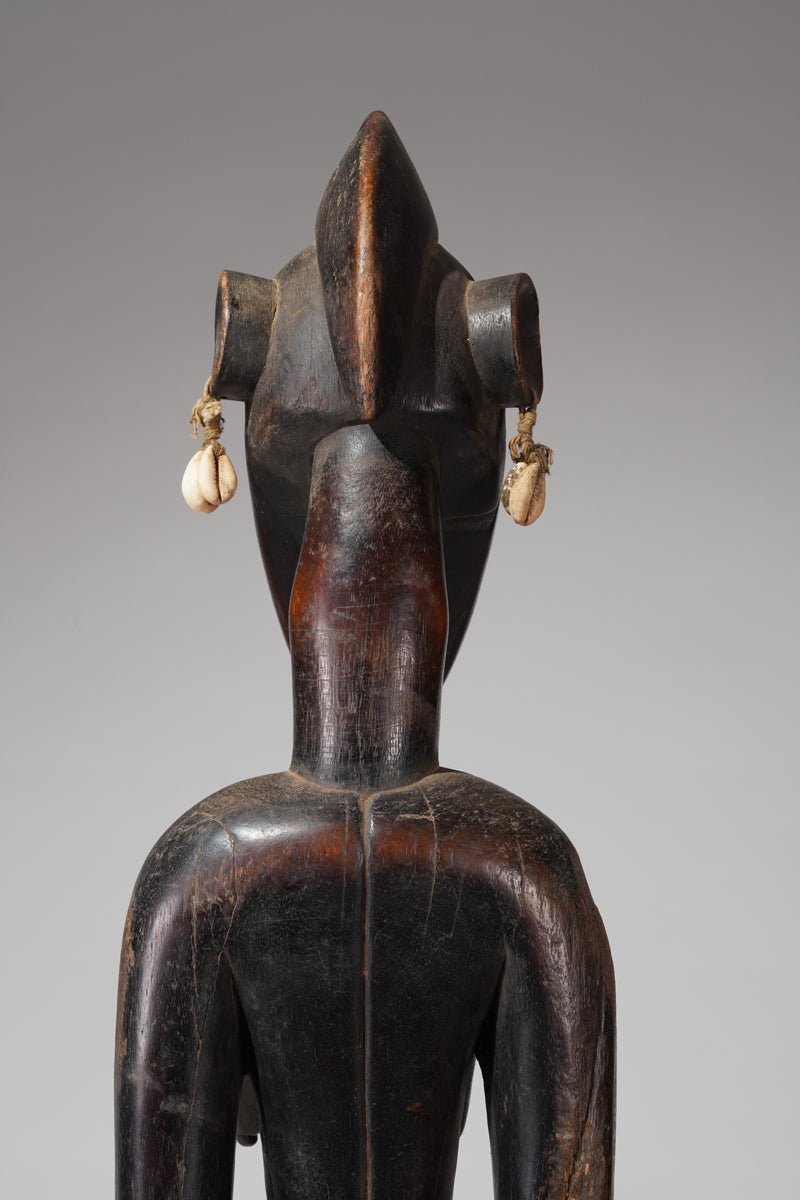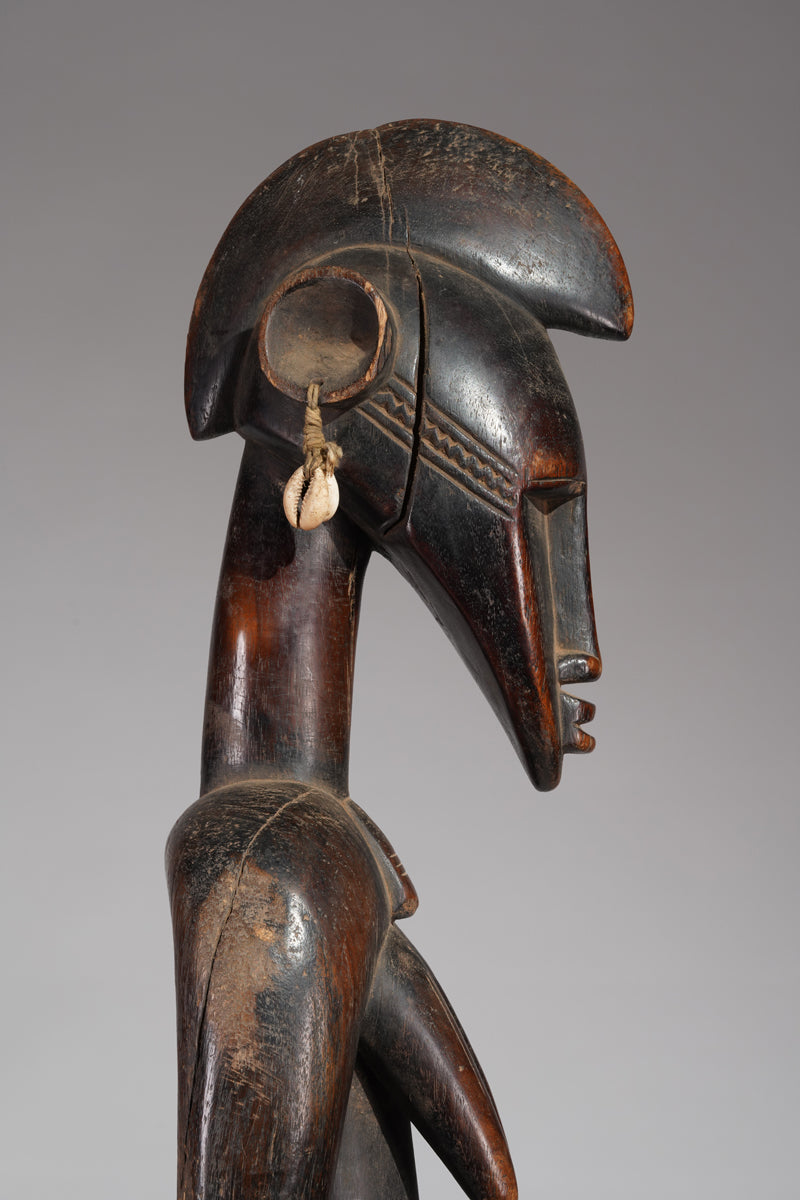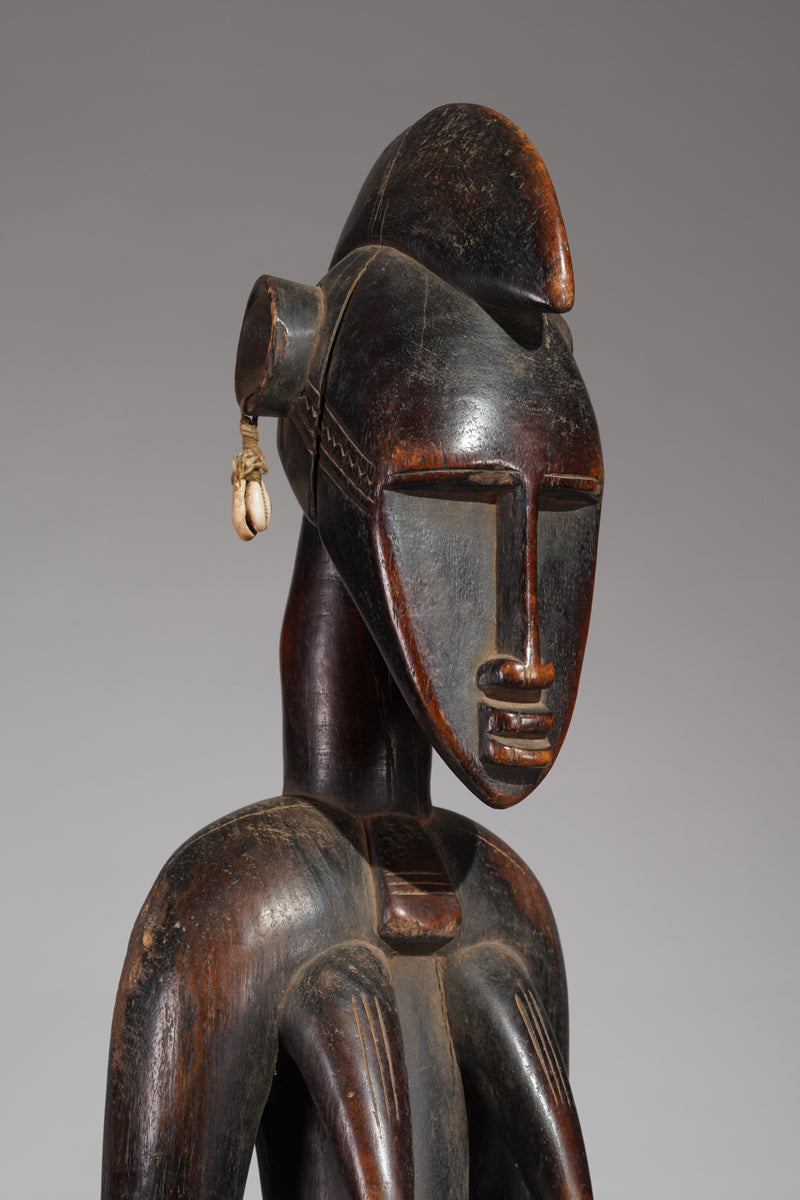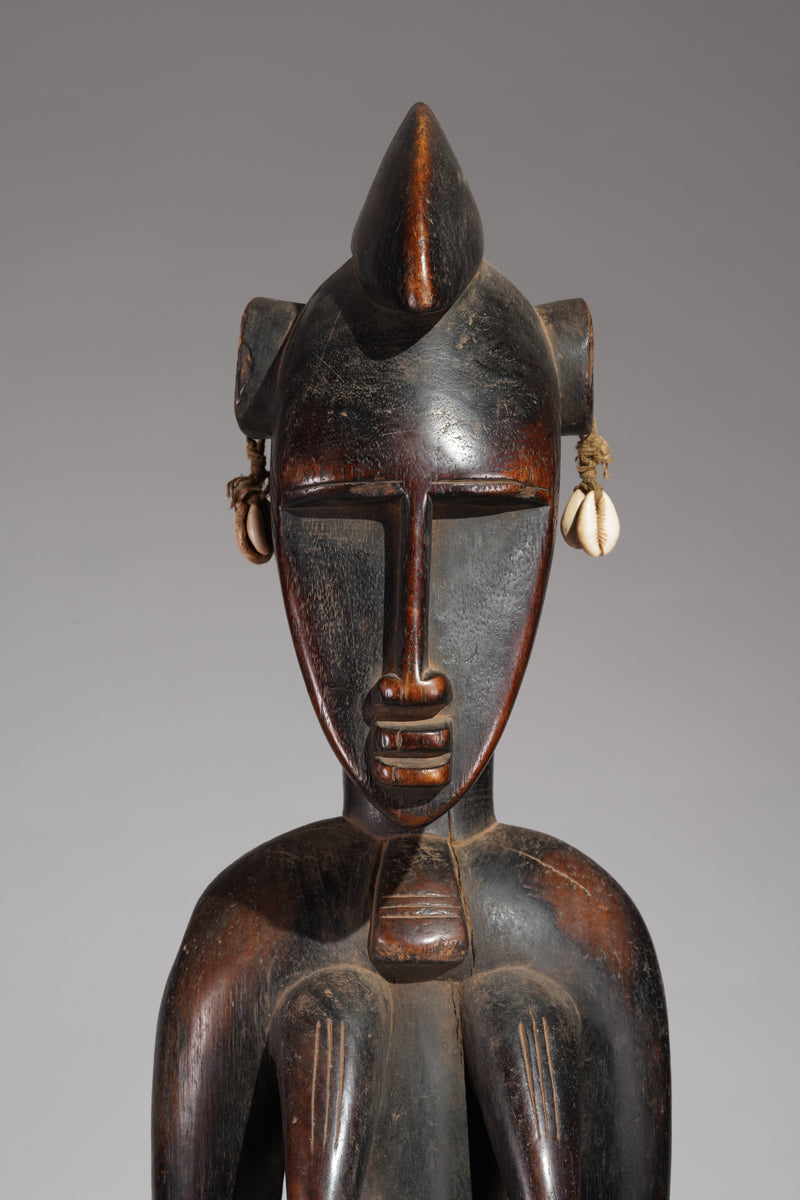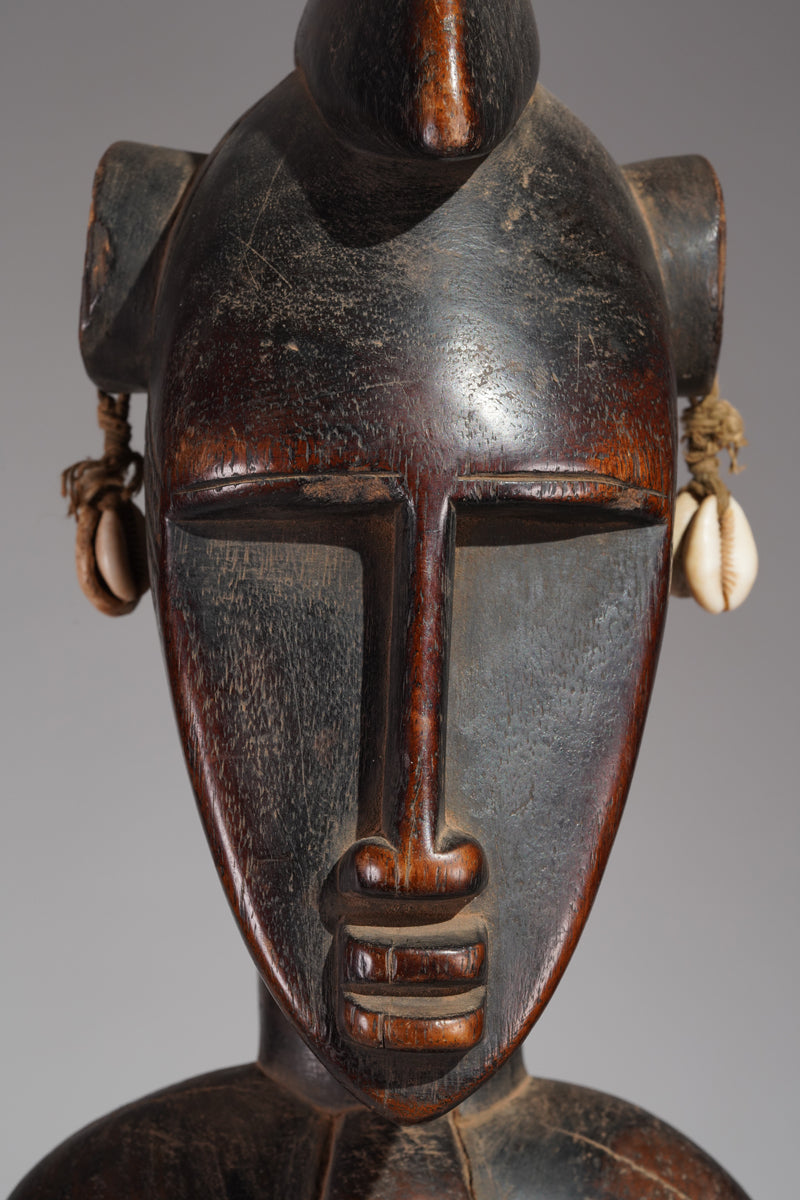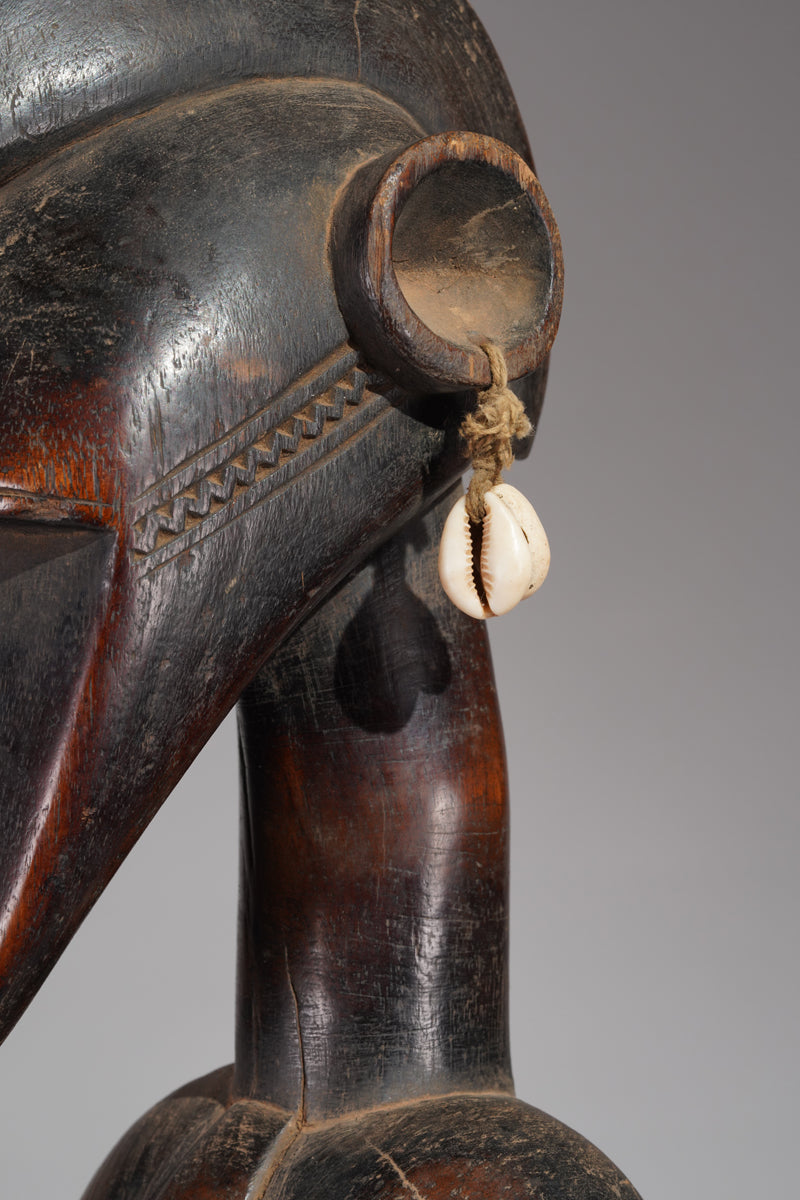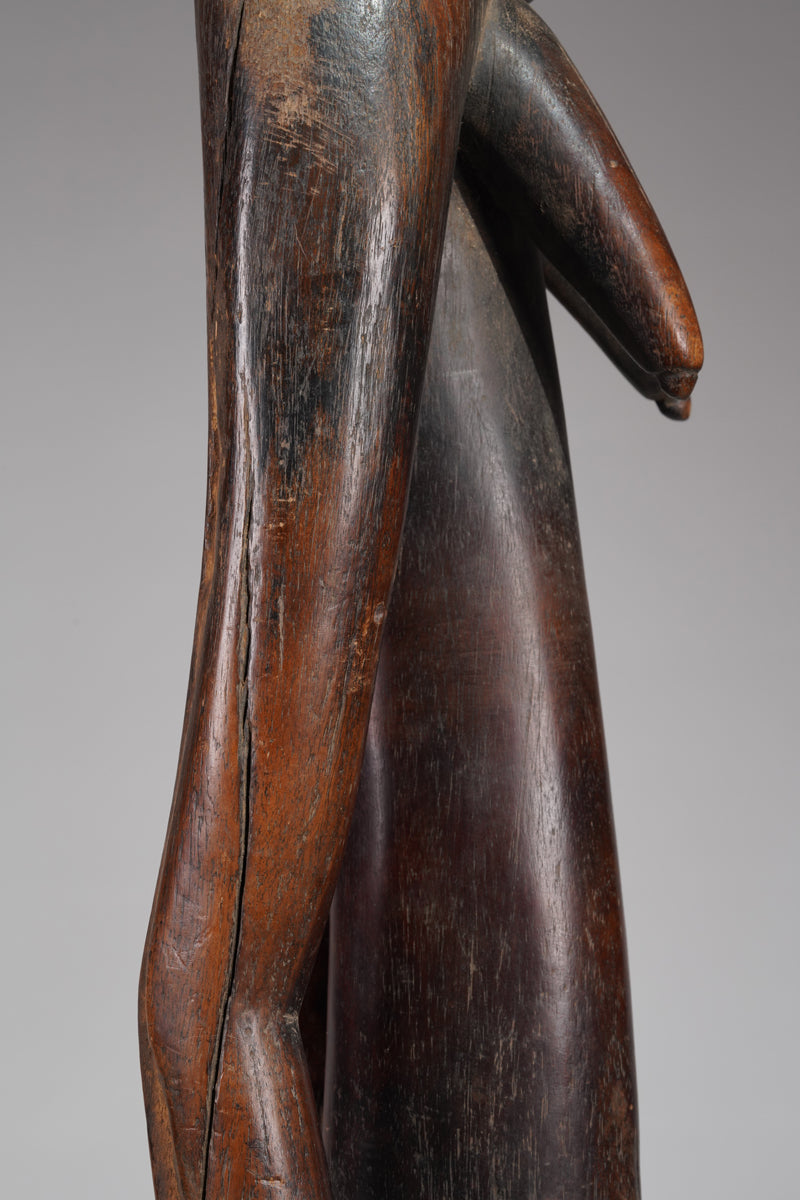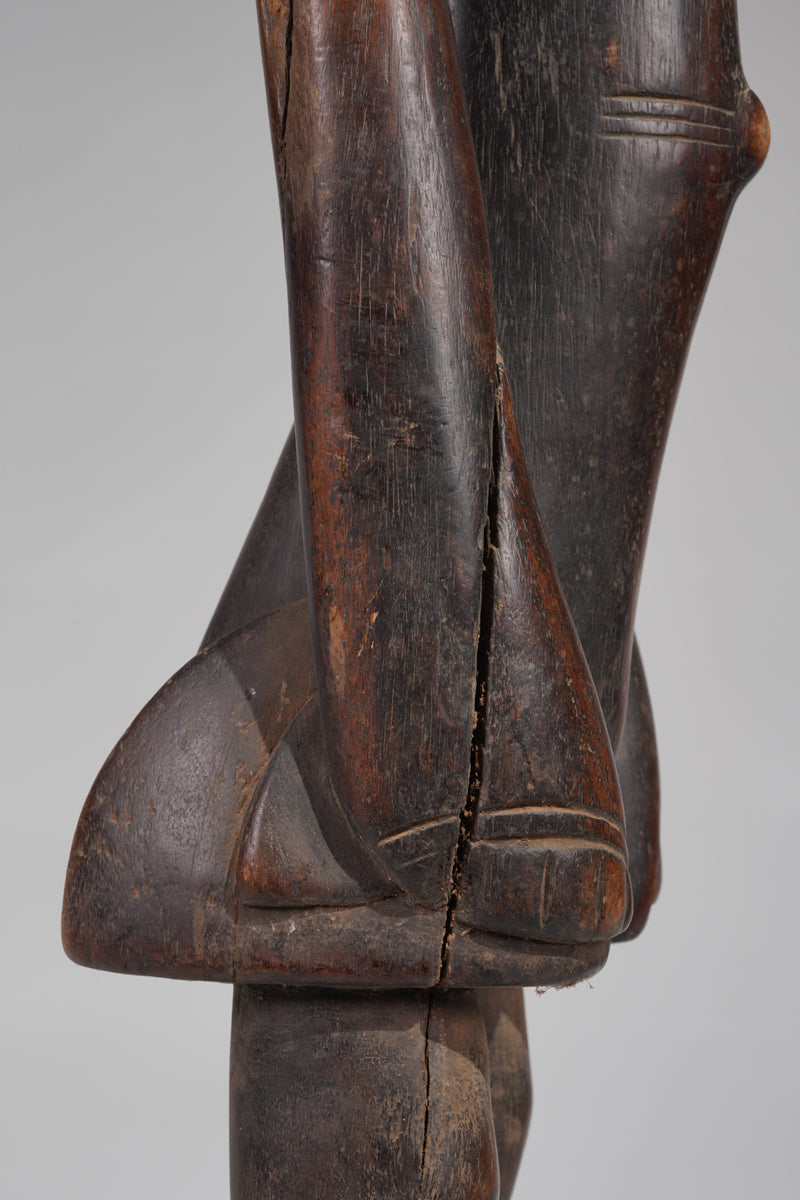wolfgang-jaenicke
A Senufo Rhythmpounder, called Déblé, or a guardian sculpture
A Senufo Rhythmpounder, called Déblé, or a guardian sculpture
Couldn't load pickup availability
A Senufo Rhythmpounder, called Déblé, or a guardian sculpture Ivory Coast, Sikasso region, almost cubist-looking, standing on a cylindrical base, short legs, elongated torso, the navel surrounded by radially arranged scarification marks, rounded shoulders, very long arms slightly bent, the hands clenched into fists, thin protruding breasts, a gently curved long neck, an elongated head with an iroquois-like hair cut, the lips are presented as two short bridges, the nose is long and flat, the eyes are formed only as incisions and the ears are worked as rings, in whose middle is a deepening, cowrie shells hanging on the ears; mahogany-colored, shiny patina, traces of longlasting rituak use at the neck and at the arms, several small age cracks. Certificate of origin and providence.
On the 5th In May 1995, on Christies this Statue Senufo was offered, which is remarkable because of their unusual and masterful design.
Viewed from the side, the reduction of the face to a few elements is particularly clear. A horizontal incision marks the eye sockets, the face plane runs vertically downwards from there, also the bridge forming the nose and the mouth. As a result, the forward-pointing pine part typical of sculptures of the Senufo also points downwards and emphasises the rigour of the face.
Another Senufo Rhythmpounder from the Sikasso region, former Kunin Collection.
After a short swing, the posterior course of the lower jaw, which initially strives almost vertically upwards, passes into the curves of the back of the skull and the hairstyle, which contrast with the flat design of the face and thus create tension. The almost circular ears, placed like plates, on whose bottom metal earrings were attached, are one of the characteristic features of the style of the Sikasso region, in which Lem found these and other comparable sculptures.
Very attractive and testifying to the fine feeling of shape of the carver is the slight thickening in the middle of the neck, which forms a fine burr there and divides its length, which is largely concealed from a lateral view from a frontal point of view through the jaw part. Below the neck begins - viewed from the front - a game of curves and straights, of arches and swings. The power that is to be expressed in these statues is combined in this specimen with a certain lightness, which gives the impression of persistence in a movement for which there are few other examples in African sculpture. The two breasts fall far away from the body like cascades into the depths. It is thinner than the neck here and thus makes the swing of the shoulders even more noticeable. The arms growing from the shoulders point slightly backwards in the bend and end in stumps, on whose forward-pointing surfaces the fingers, in the typical design of the forge, are indicated only by notches. Seen from the side, the swings of the body are less spanding than from a frontal point of view. The head Looks particularly large by the hairstyle and dominates the body - a peculiarity of the African sculpture. Particularly beautiful is the refined design of the neck, the division of the necessary length by a slight thickening forming a fine ridge in the middle and the gentle transition into the spine.
The rear view shows a gentle inclination of the body to the side and a slight rotation of the head to the left. It is unlikely that this bending, which acts like a frozen movement, was created by a warp of the wood that was still fresh at the time the statue was made, because it does not have any of the cracks usually created during such a process. It is also difficult to imagine that a master of his craft has used an already curved piece of wood for the production of such an extraordinary and certainly important statue. It is therefore a deliberately used stylistic device that also distinguishes other specimens of these sculptures of the Senufo. The neck shows from this point of view a vertical thickening with a fine ridge, which forms a cross with the horizontal. The backbone is characterised by a deep notch that reaches down to the tail and separates the two buttocks on which the hands rest.
Not to be overlooked is a stylistic discrepancy between the face and the torso up to the hip on the one hand and the hip itself with the legs disappearing in a base on the other. It may be perceived as a formal weakness from the point of view of a viewer accustomed to European art, but the person familiar with African art also wonders what this strange and only the statues of this type's own design is all about. The legs grow like two round woods from the buttock halves and disappear in a heavy base that does not really want to fit the finely crafted statue. While the head and body up to the hips have a relatively smooth and shiny surface, the legs and base clearly show the traces of the decks, which can only be seen in the upper area. An inability to find a qualitatively adequate solution for the design of the lower part for the lower part can be excluded from such Phosecure abilities in a sknitzer, may have been the basis of an intention about which one can only speculate.Burkhard Gottschalk writes that this is not a rhythm pounder (Débéle, do:ogèlè), but a very rare stationary used guardian figure. These sculptures are called propi:ibèlè, „children of the Poro".
"Their membership of the Poro would be an explanation for our little knowledge of their significance, because this organisation, which largely determines the village world of the Senufo, is a secret society. ... Even rarer are the statues [propi:ibèlè] … of which it is only said that they belong to the Poro, because there is no reliable information about their use.“ Burkhard Gottschalk, Kunst aus Schwarzafrika. SENUFO. Unbekannte Schätze aus privaten Sammlungen, 2009, p.174, 179.
Lit.: Burkhard Gottschalk, Senufo. Massa und die Statuen des Poro, 2002; Staatliche Museen der Preußischer Kulturbesitz, Museum für Völkerkunde Berlin, Die Kunst der Senufo, Elfenbeinküste. Mit einem Beitrag von Till Förster, 1990; Museum Rietberg Zürich, Die Kunst der Senufo aus Schweizer Sammlungen, 1988; Susan Elizabeth Gagliardi, Senufo unbound. Dynamics of art and identity in West Africa, Cleveland 2015.
wj
Height: 117 cm
Weight: 8,7 kg
